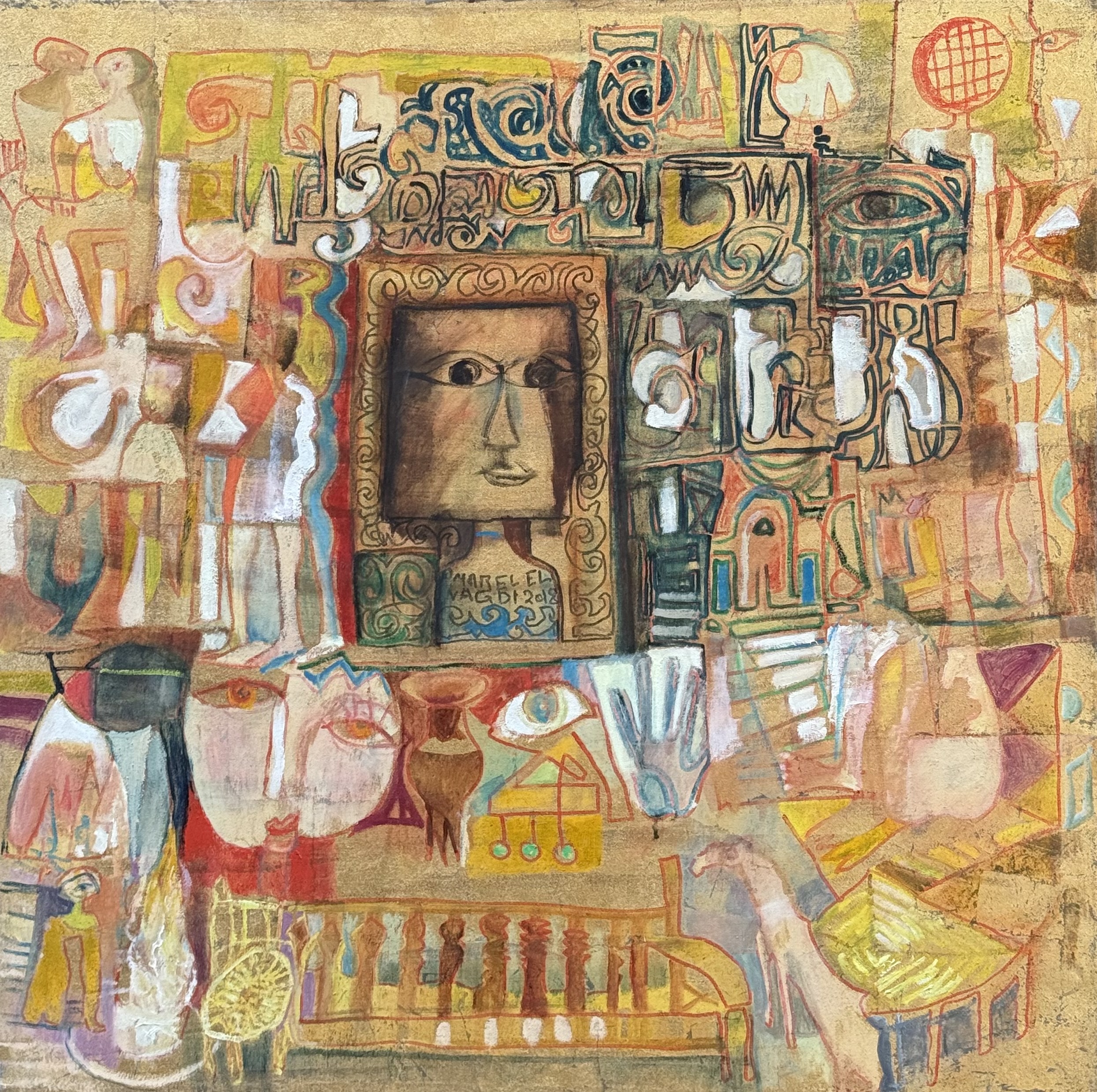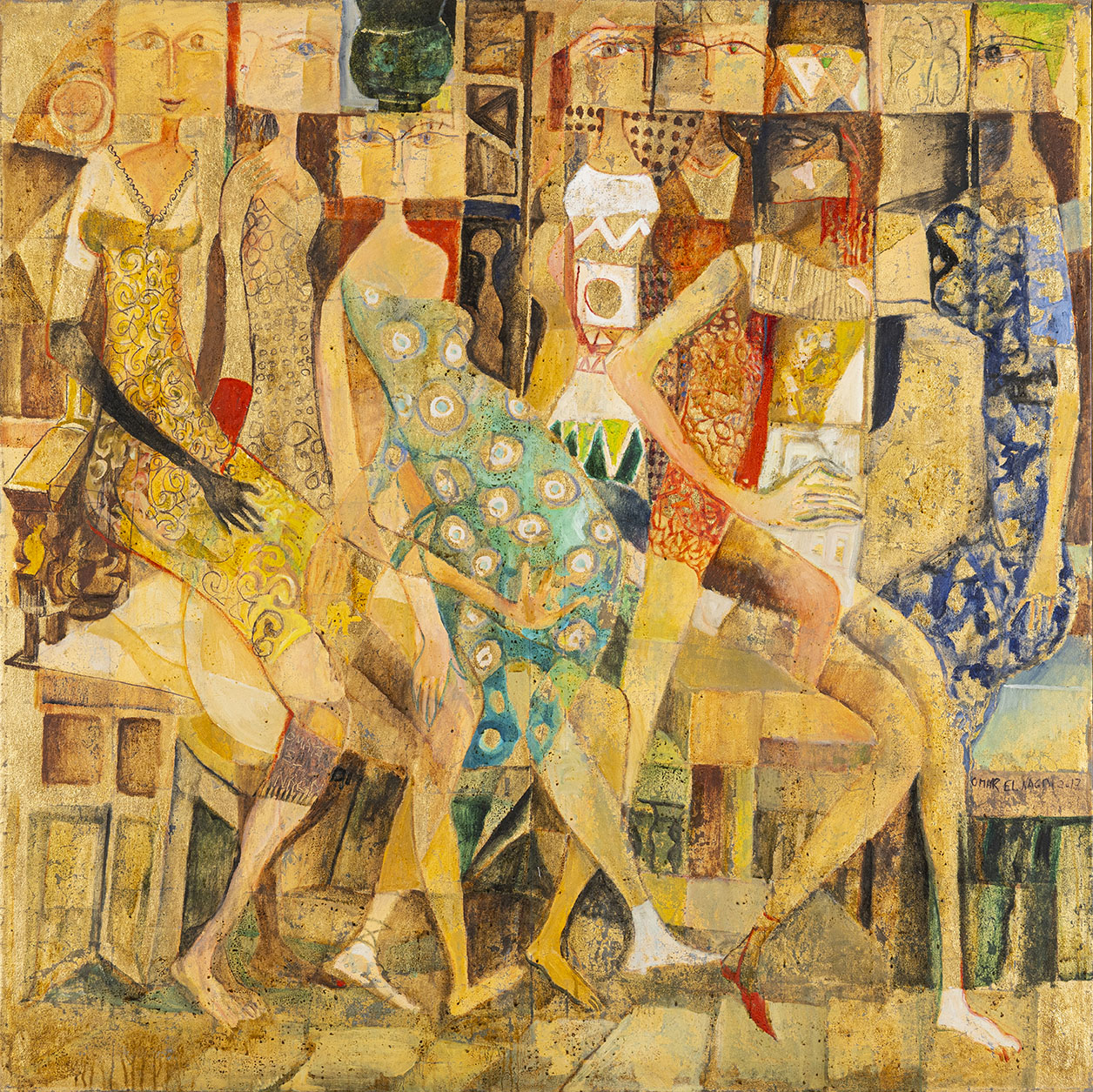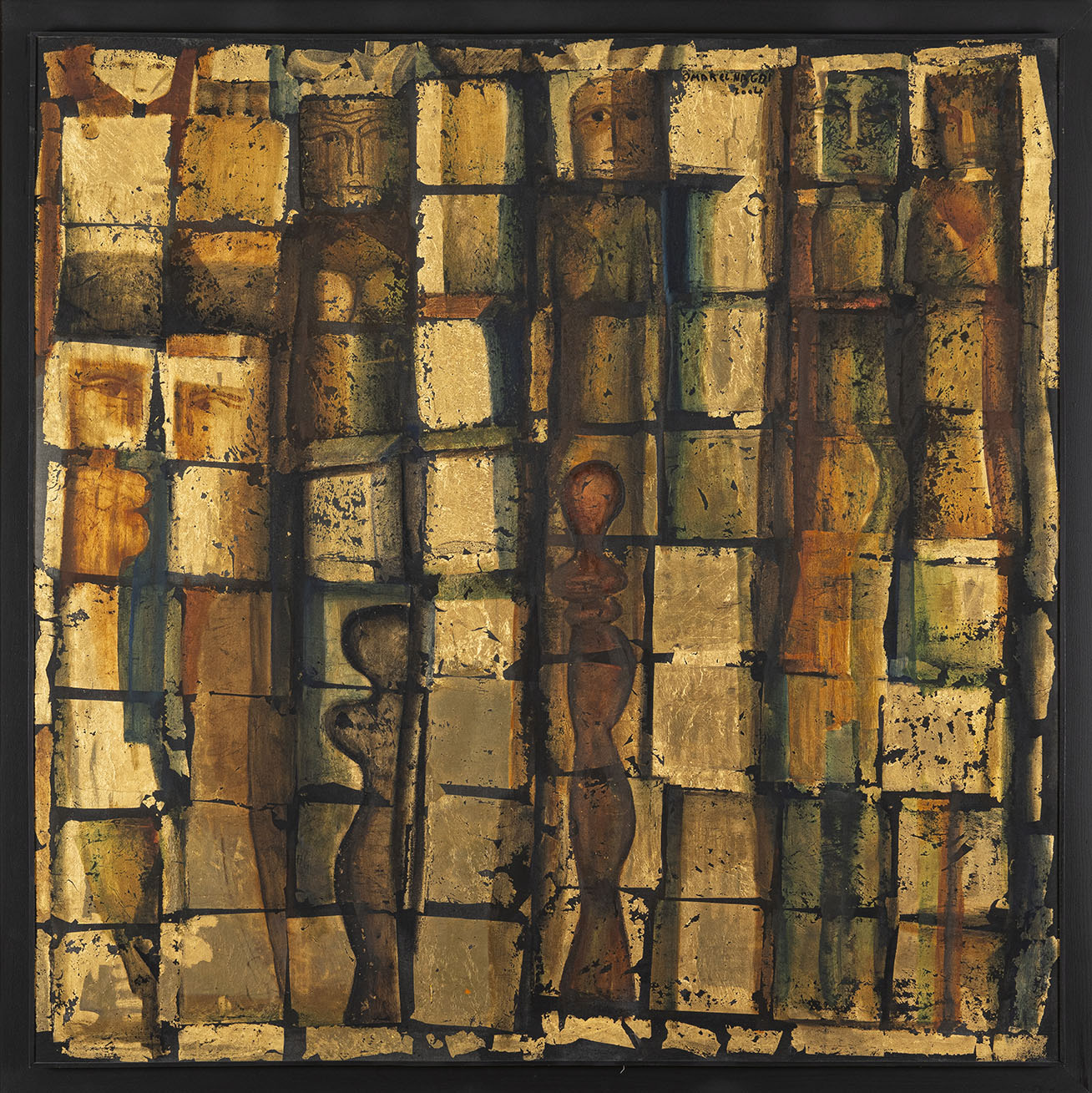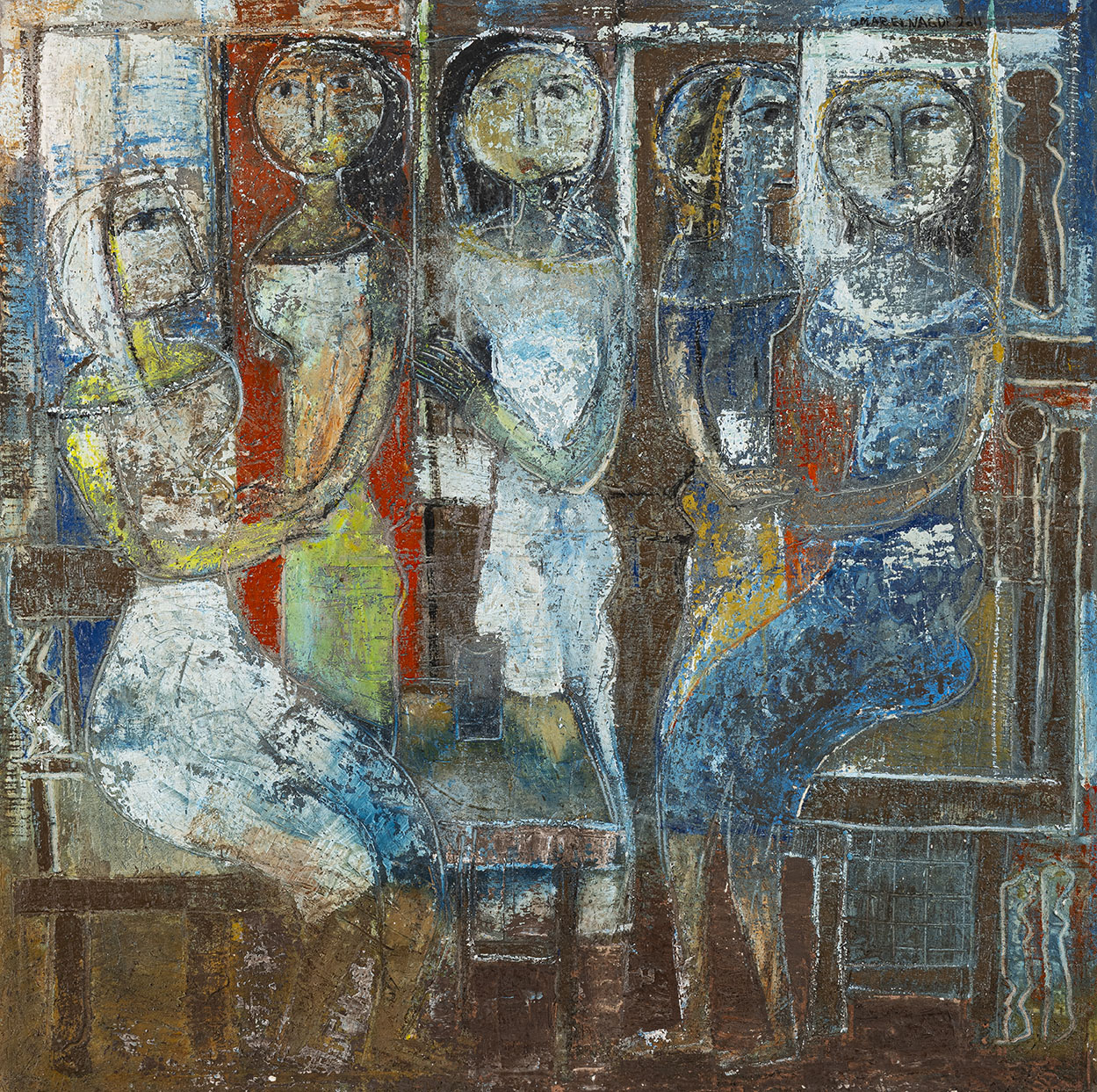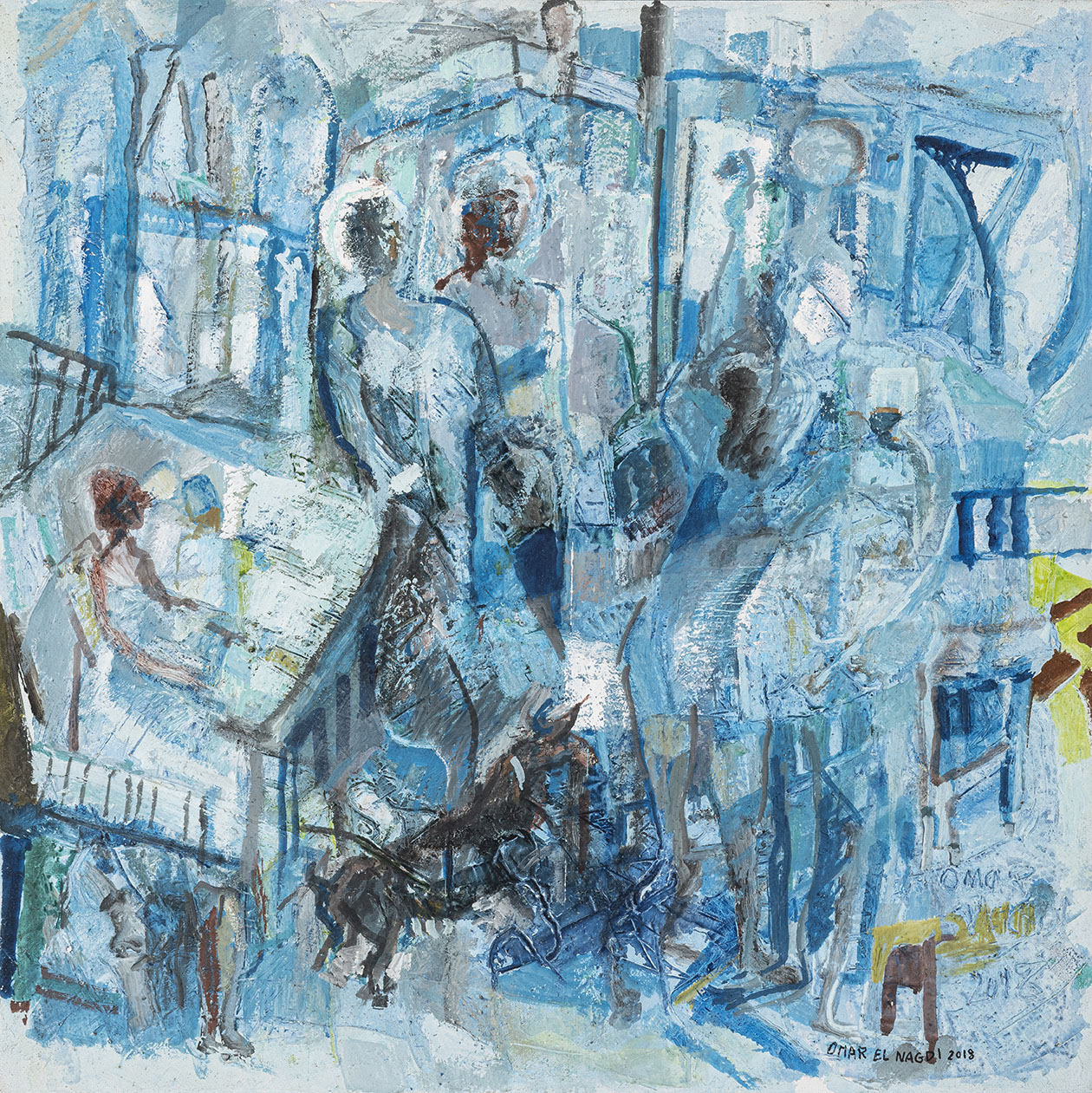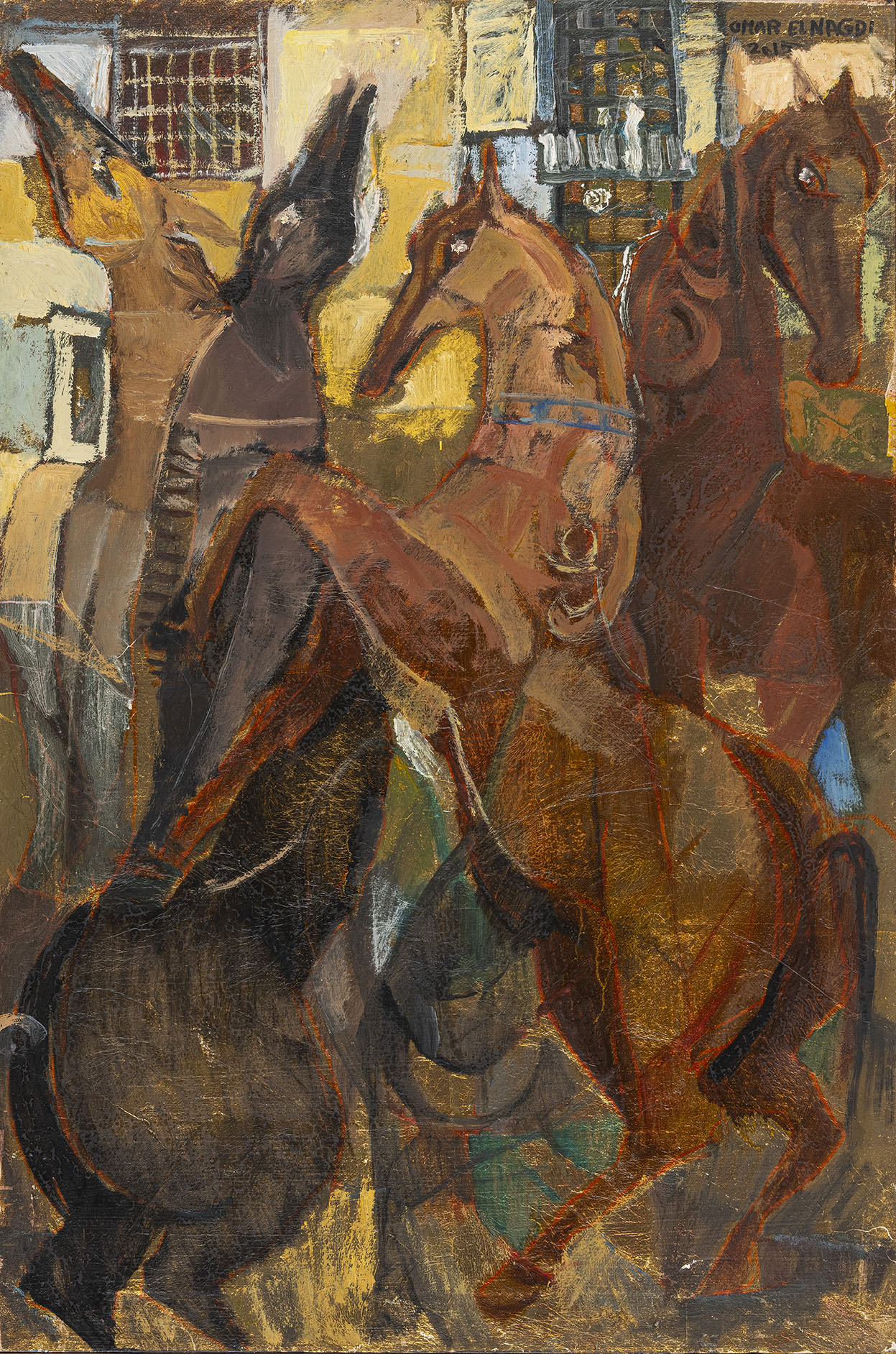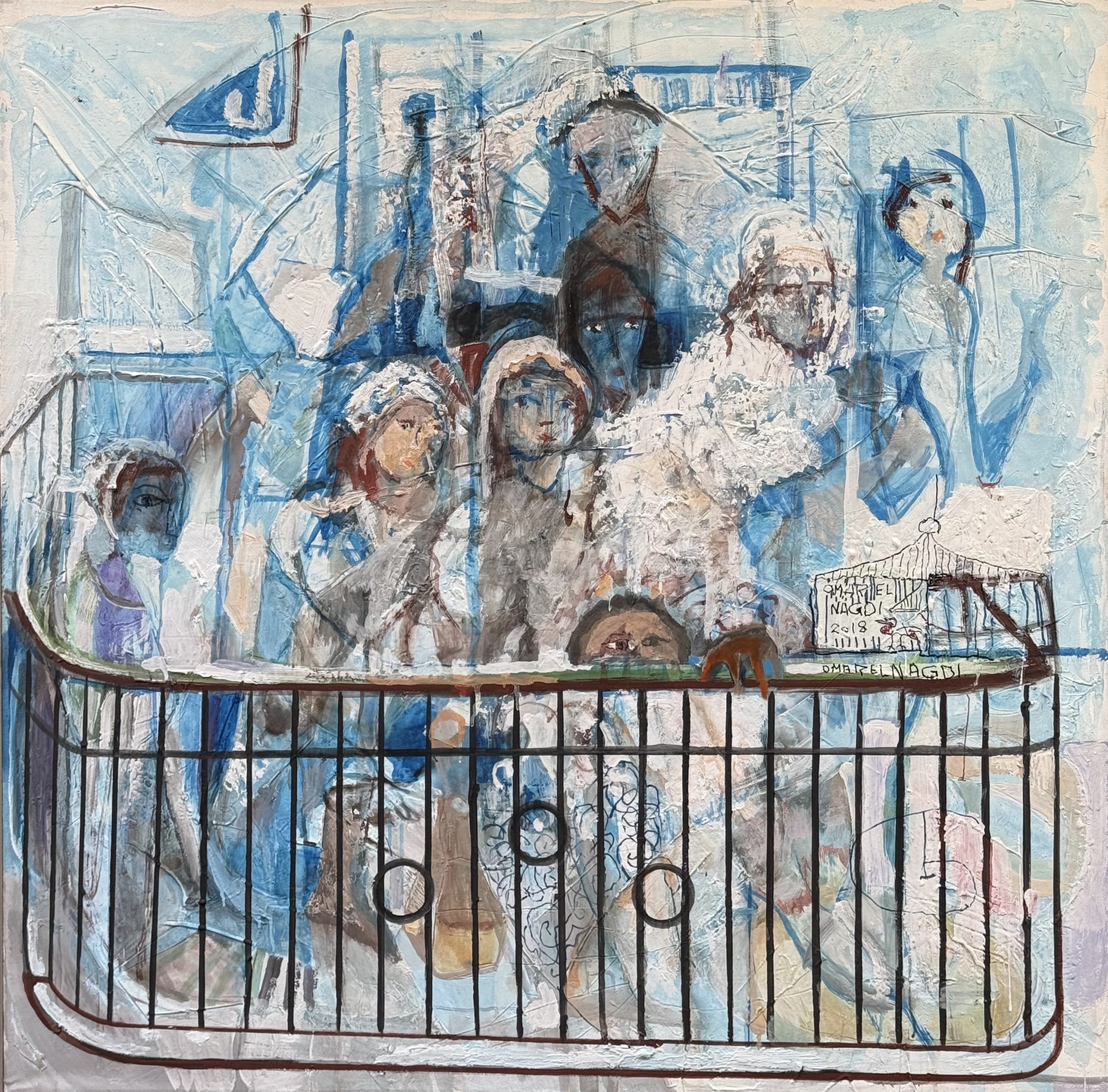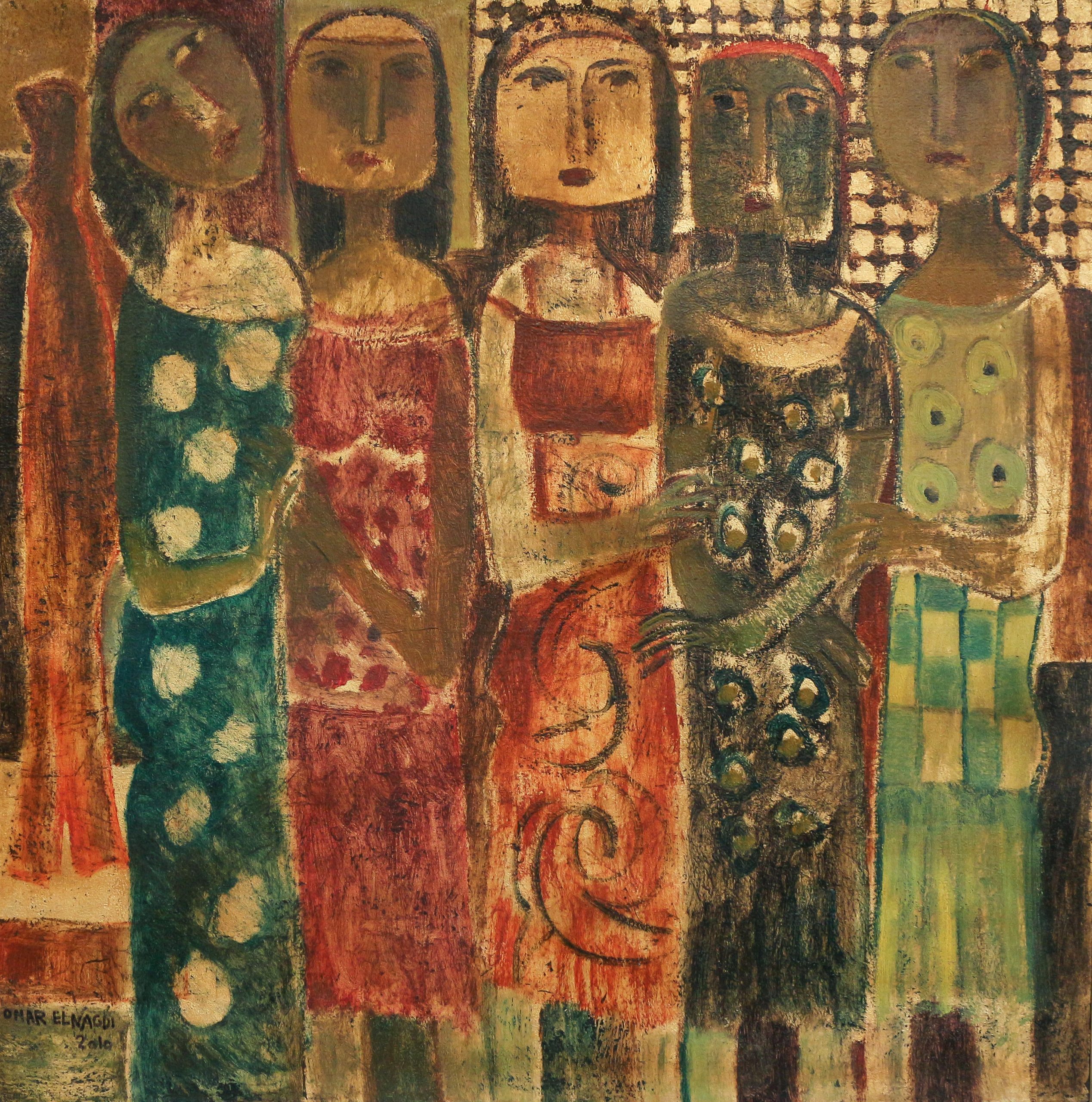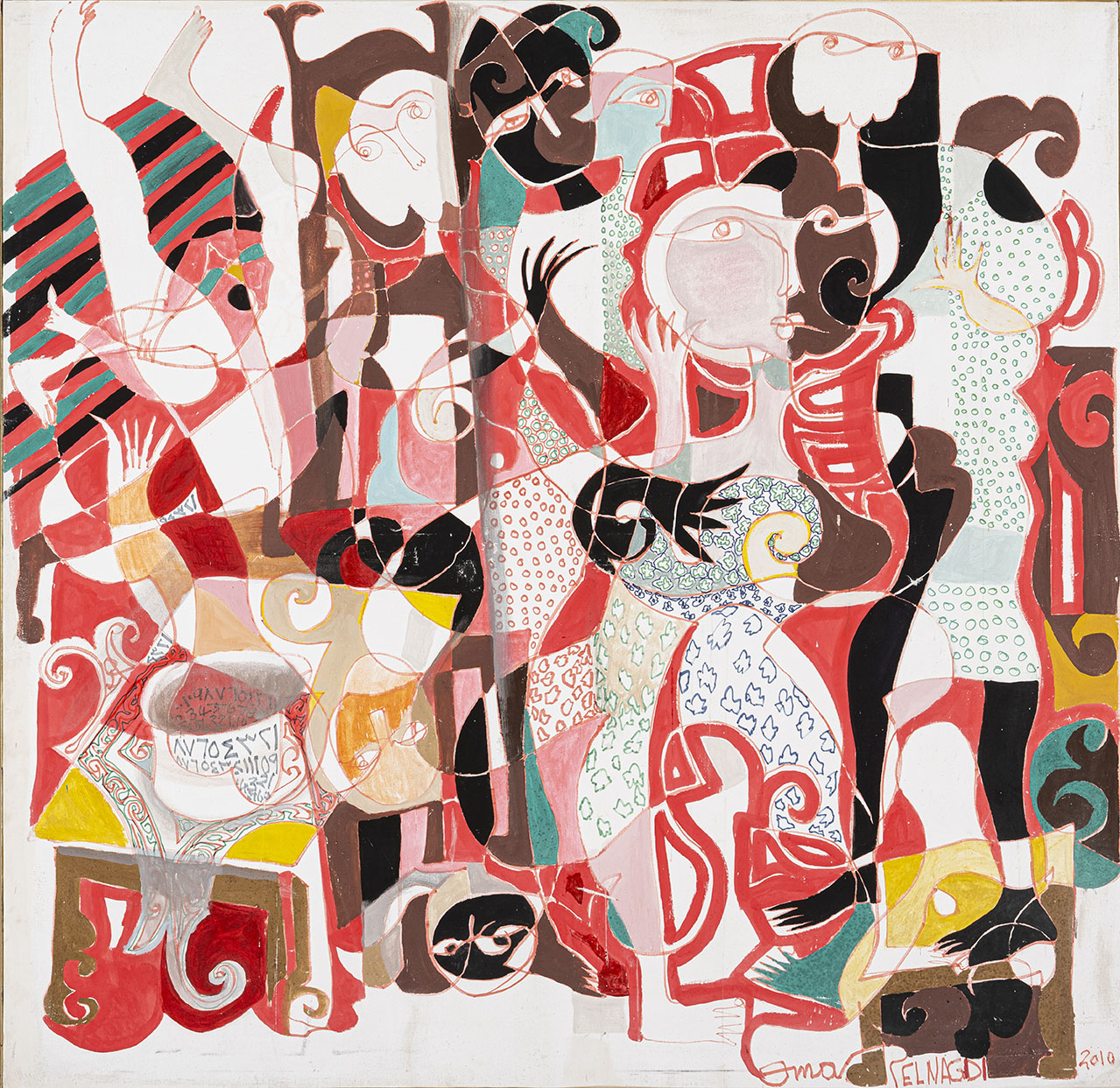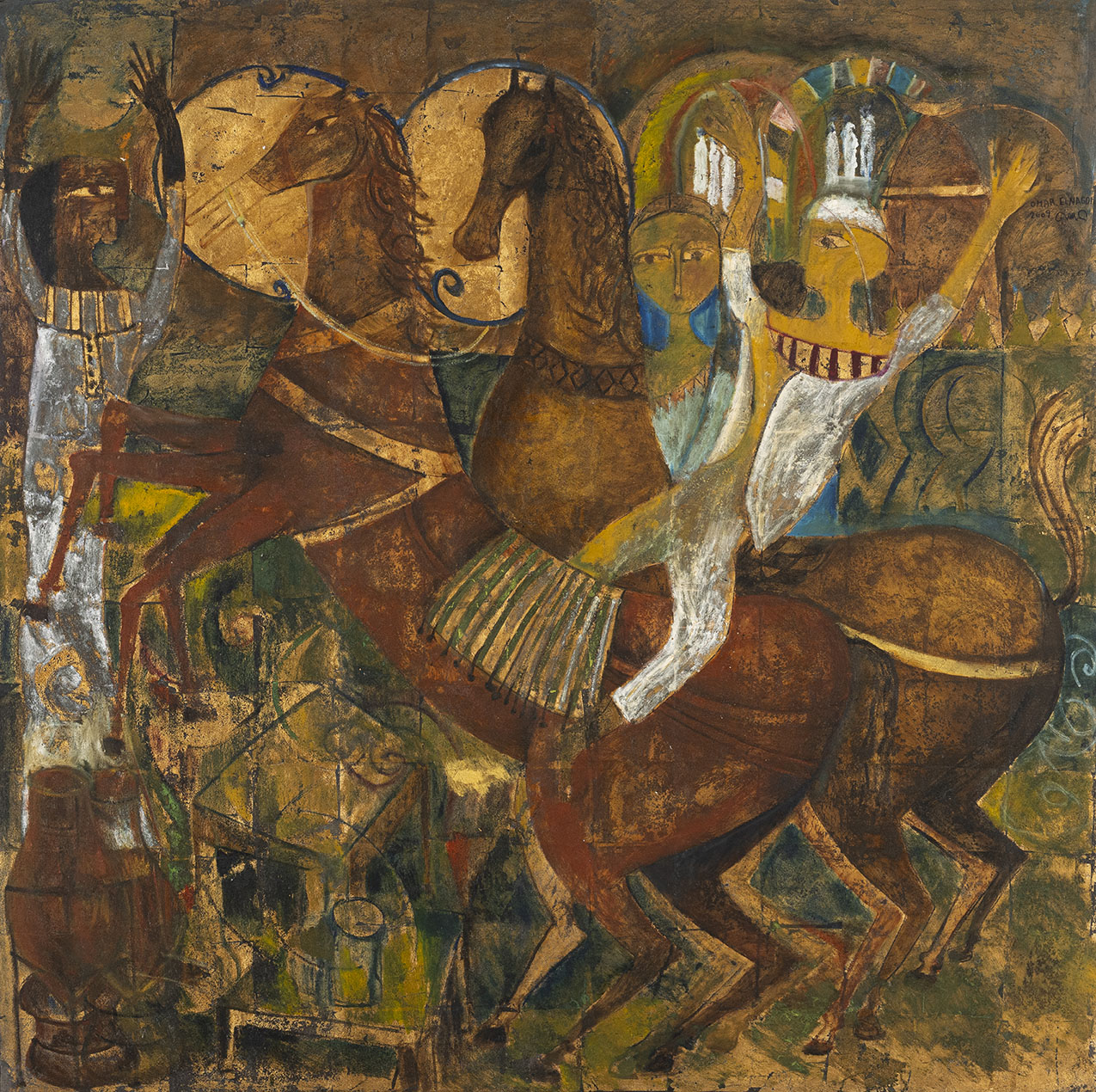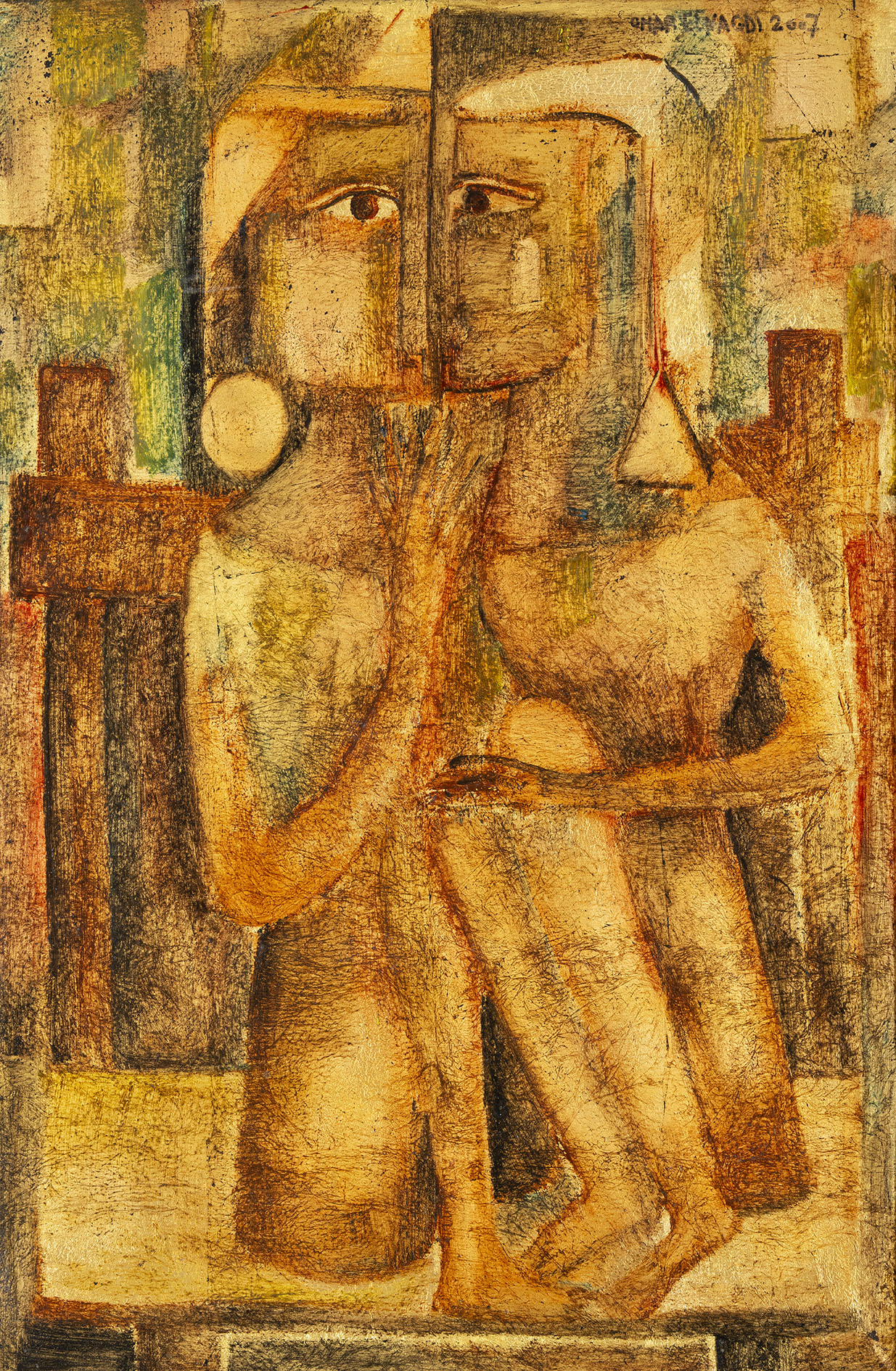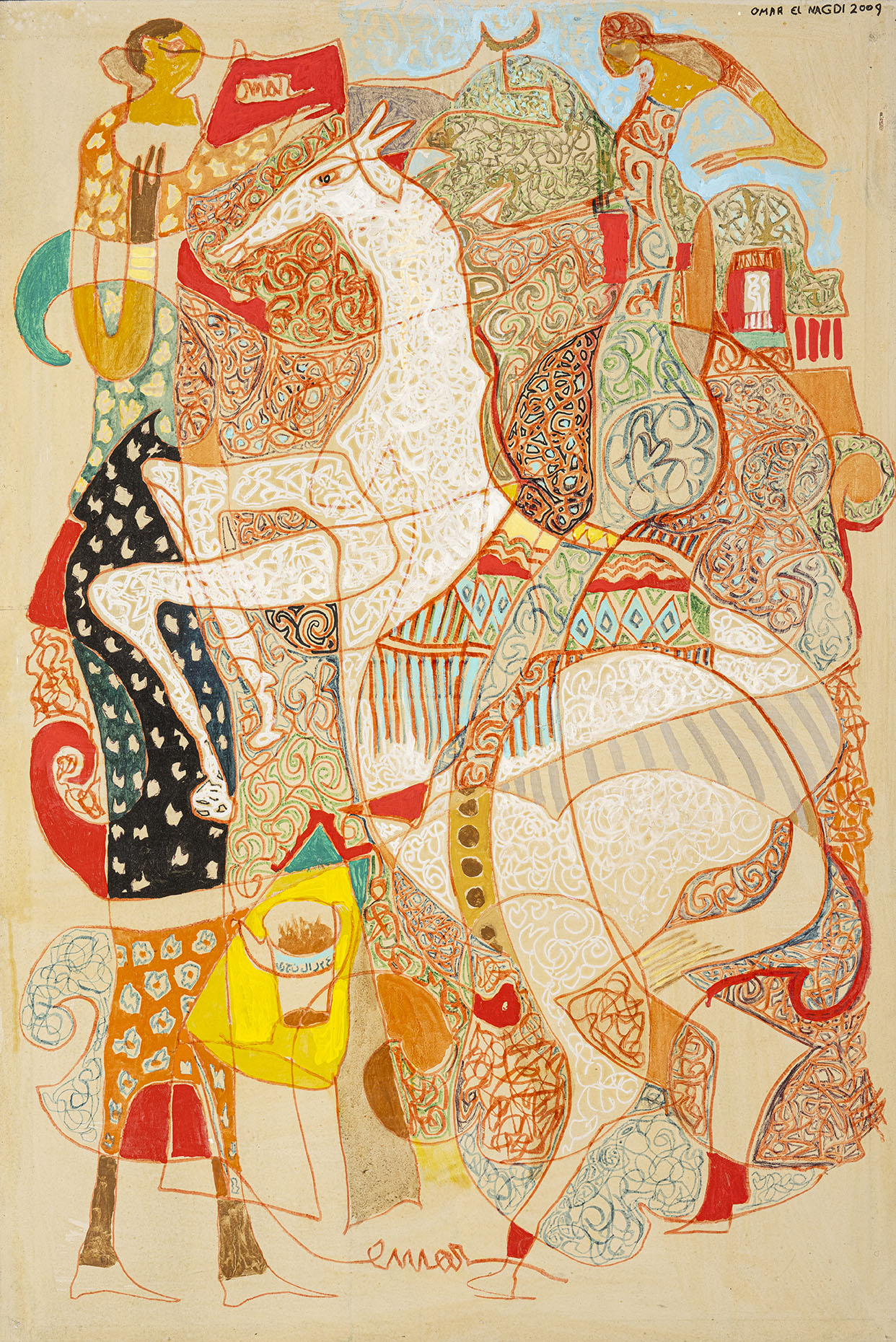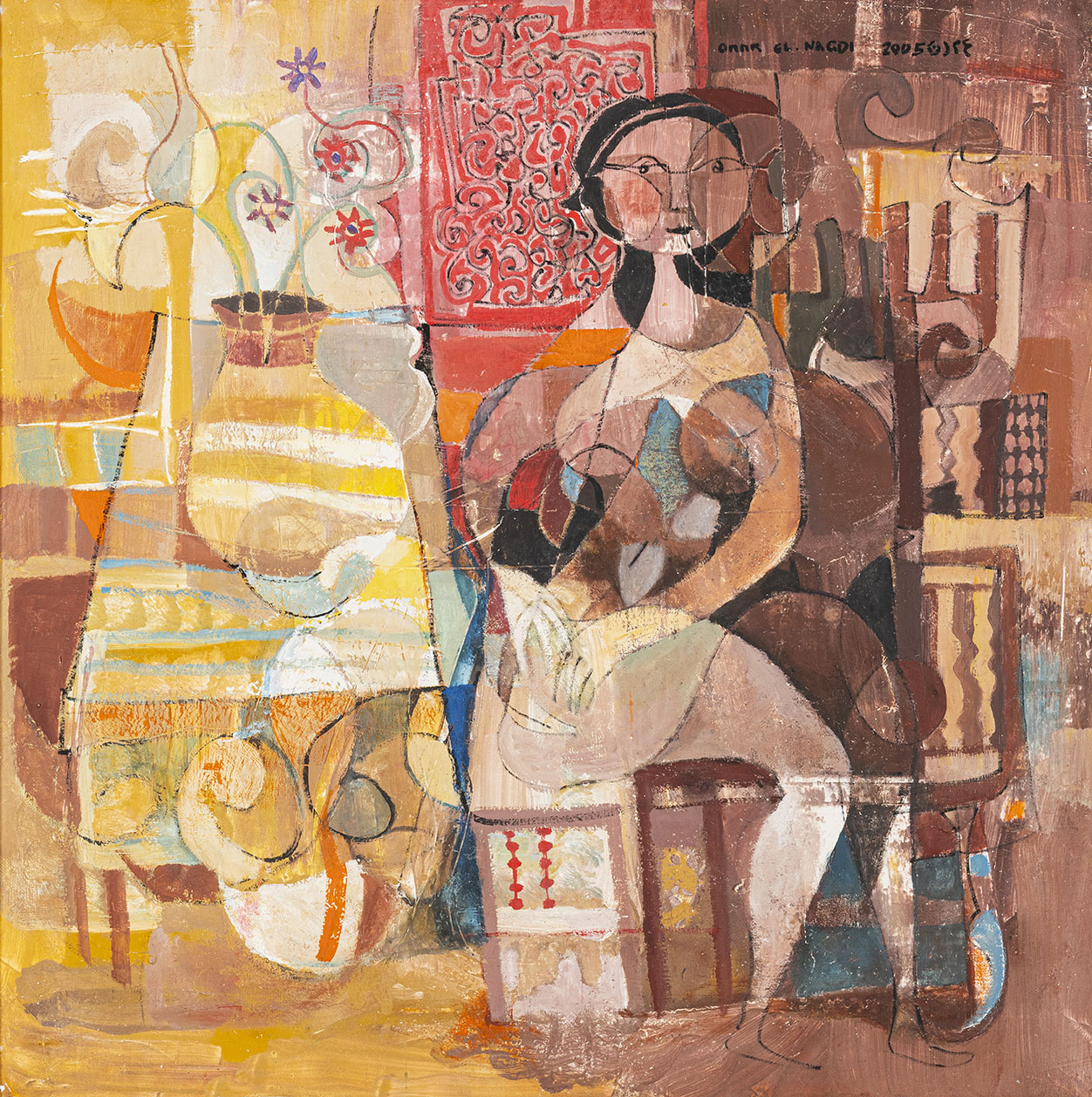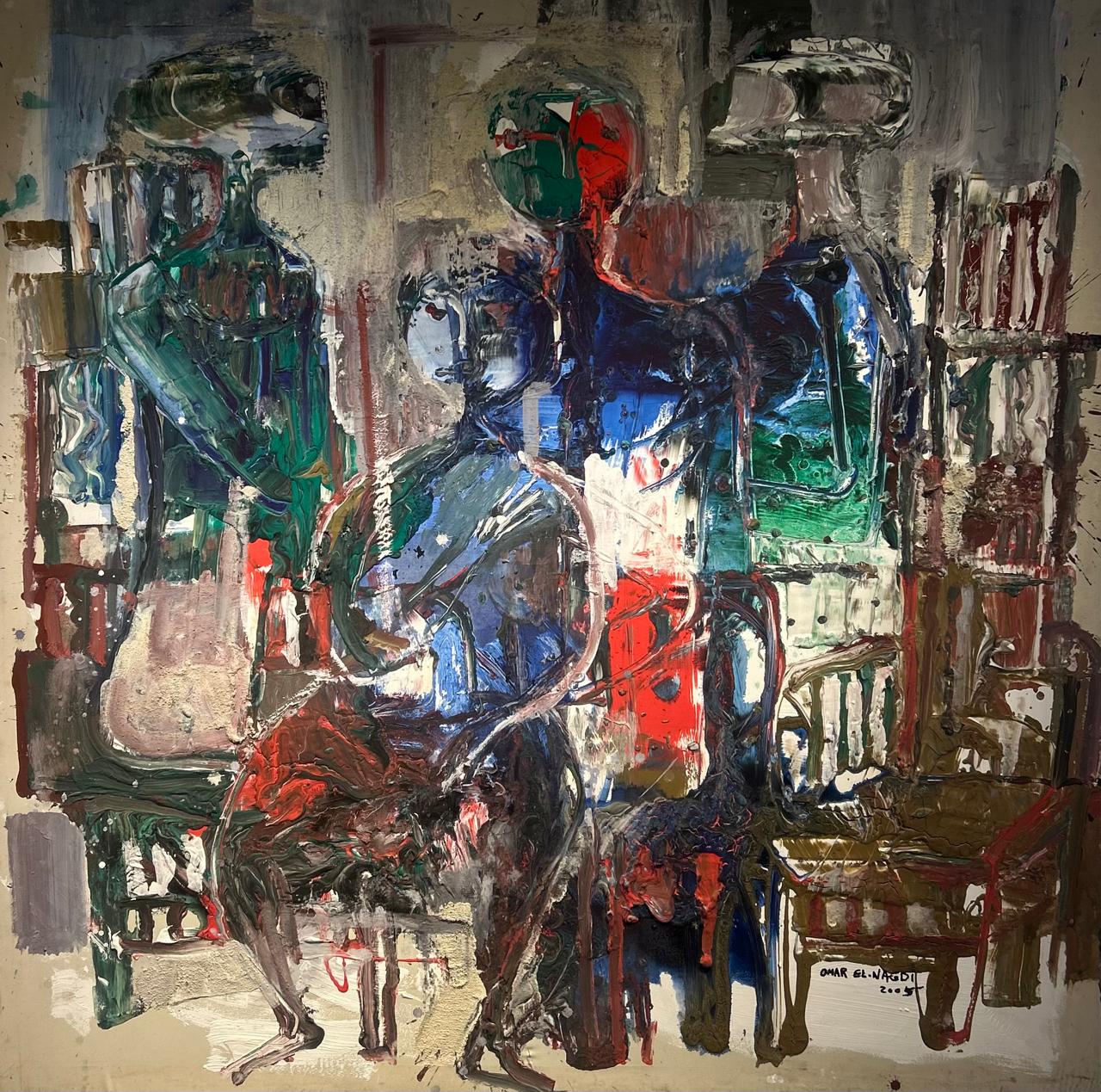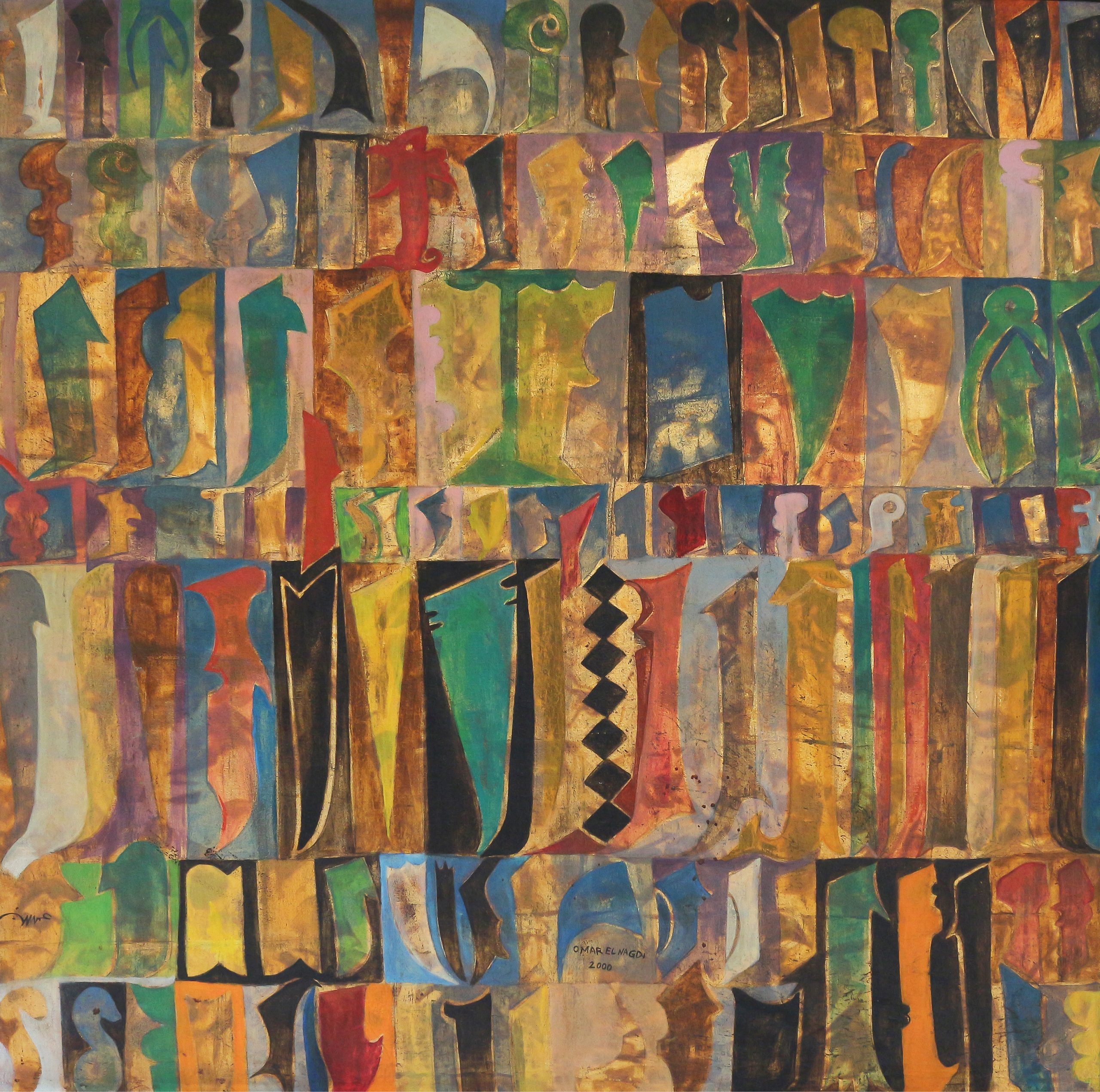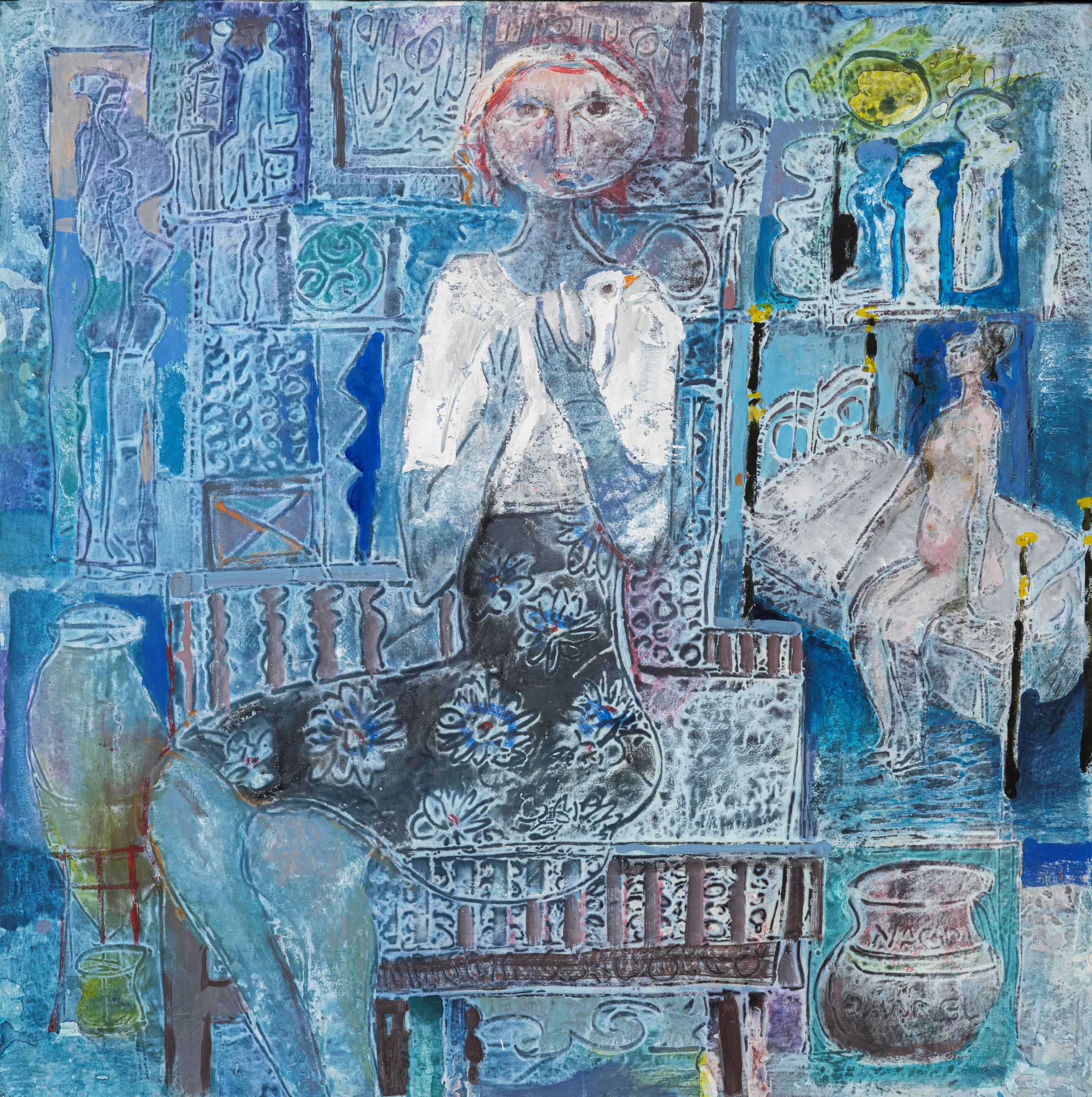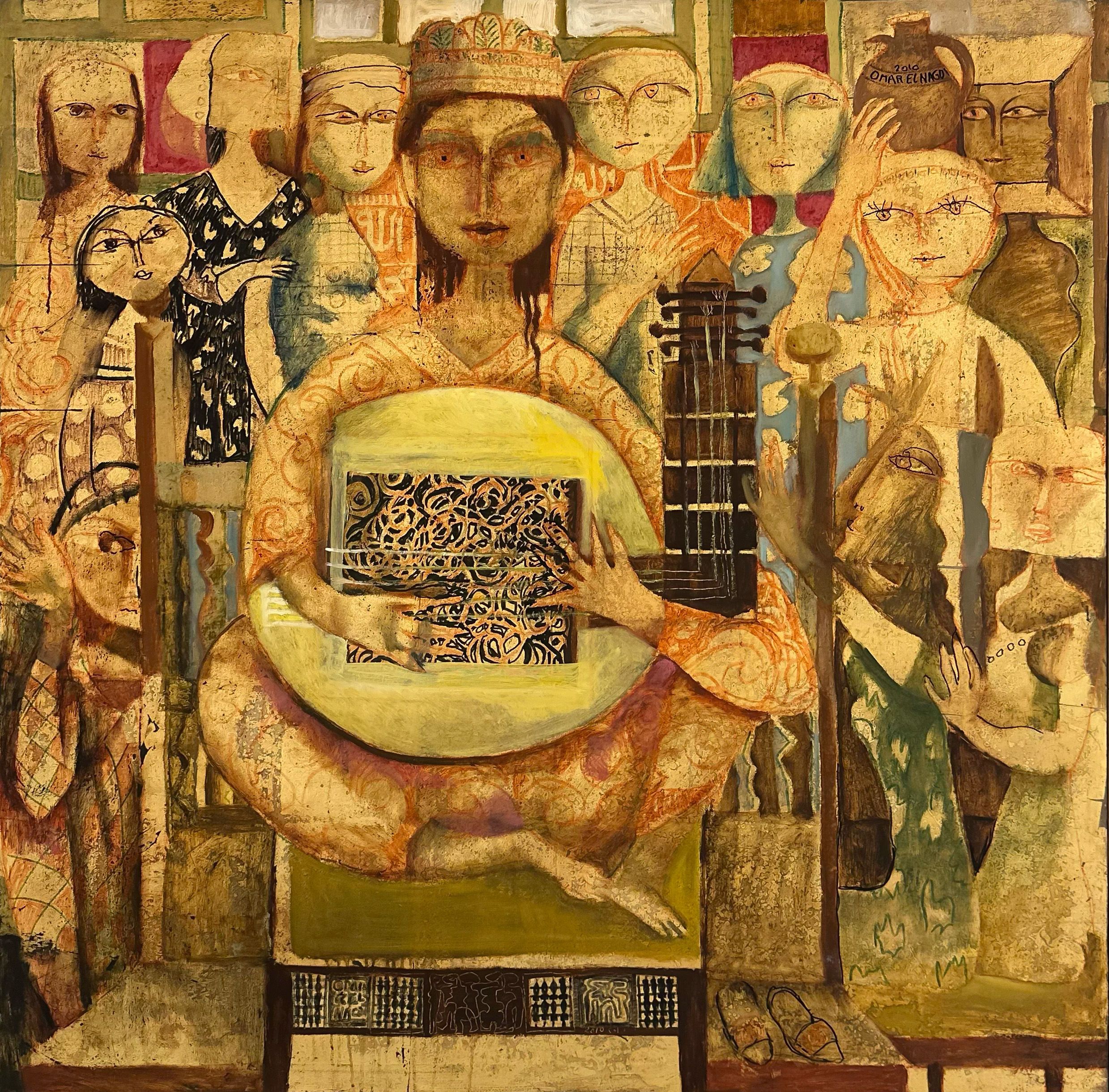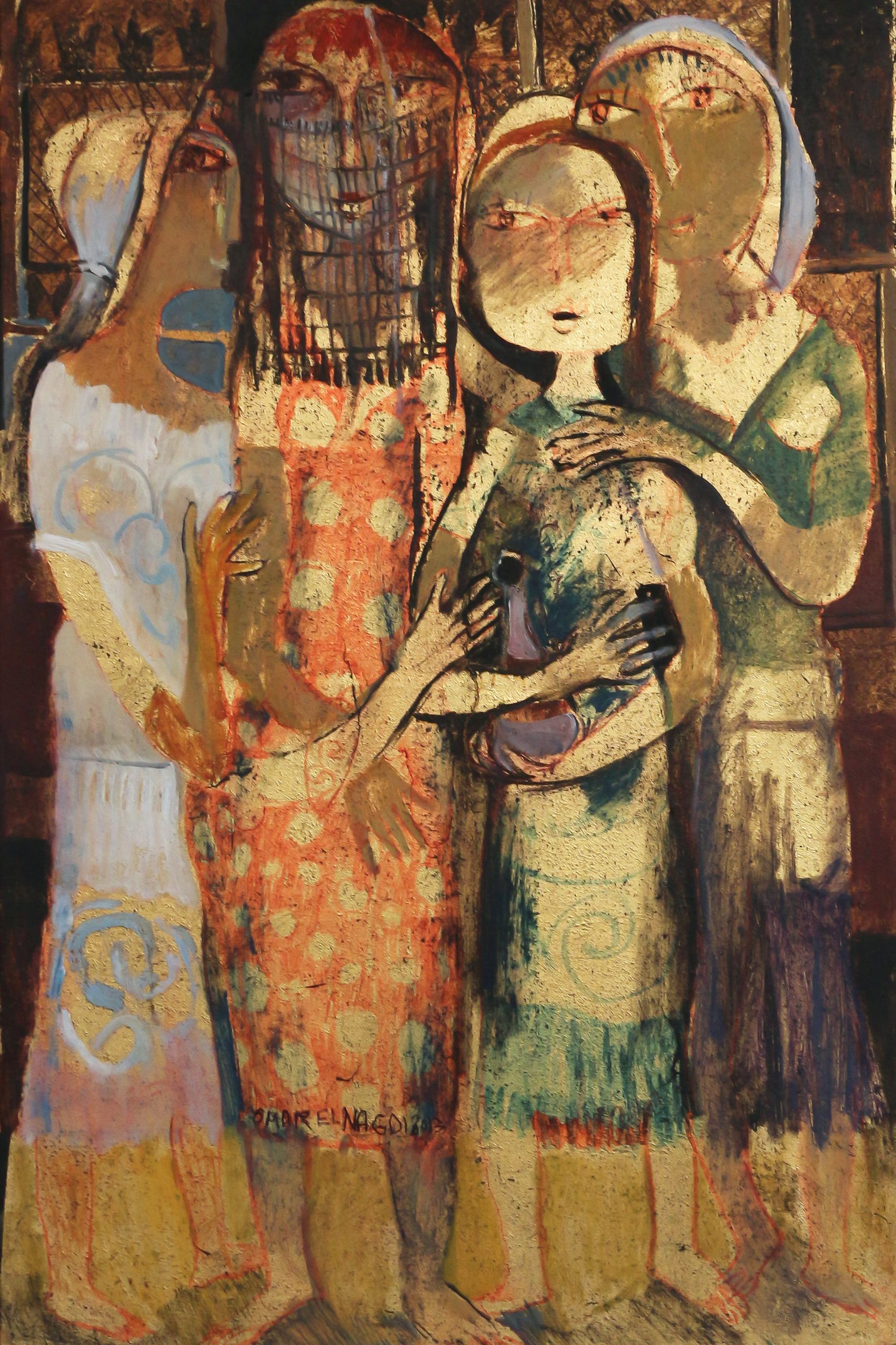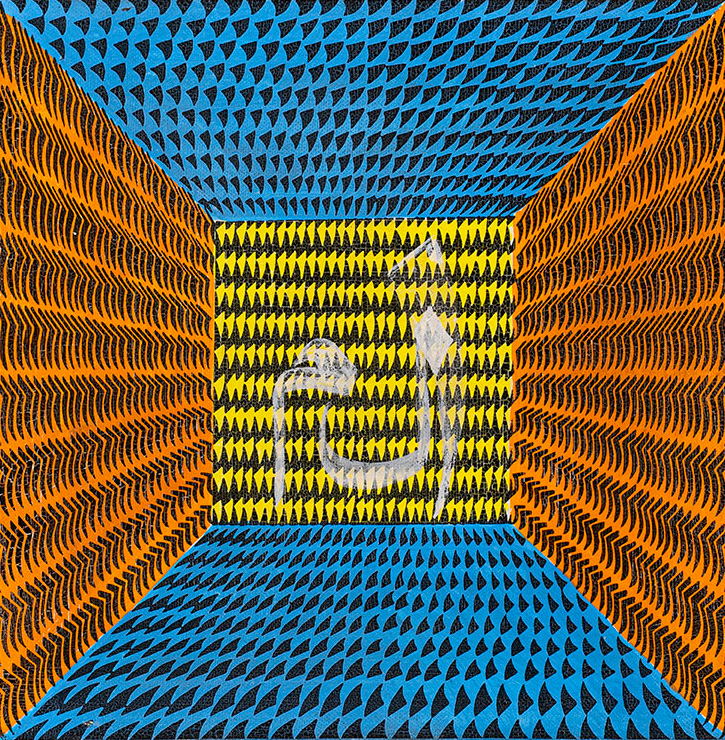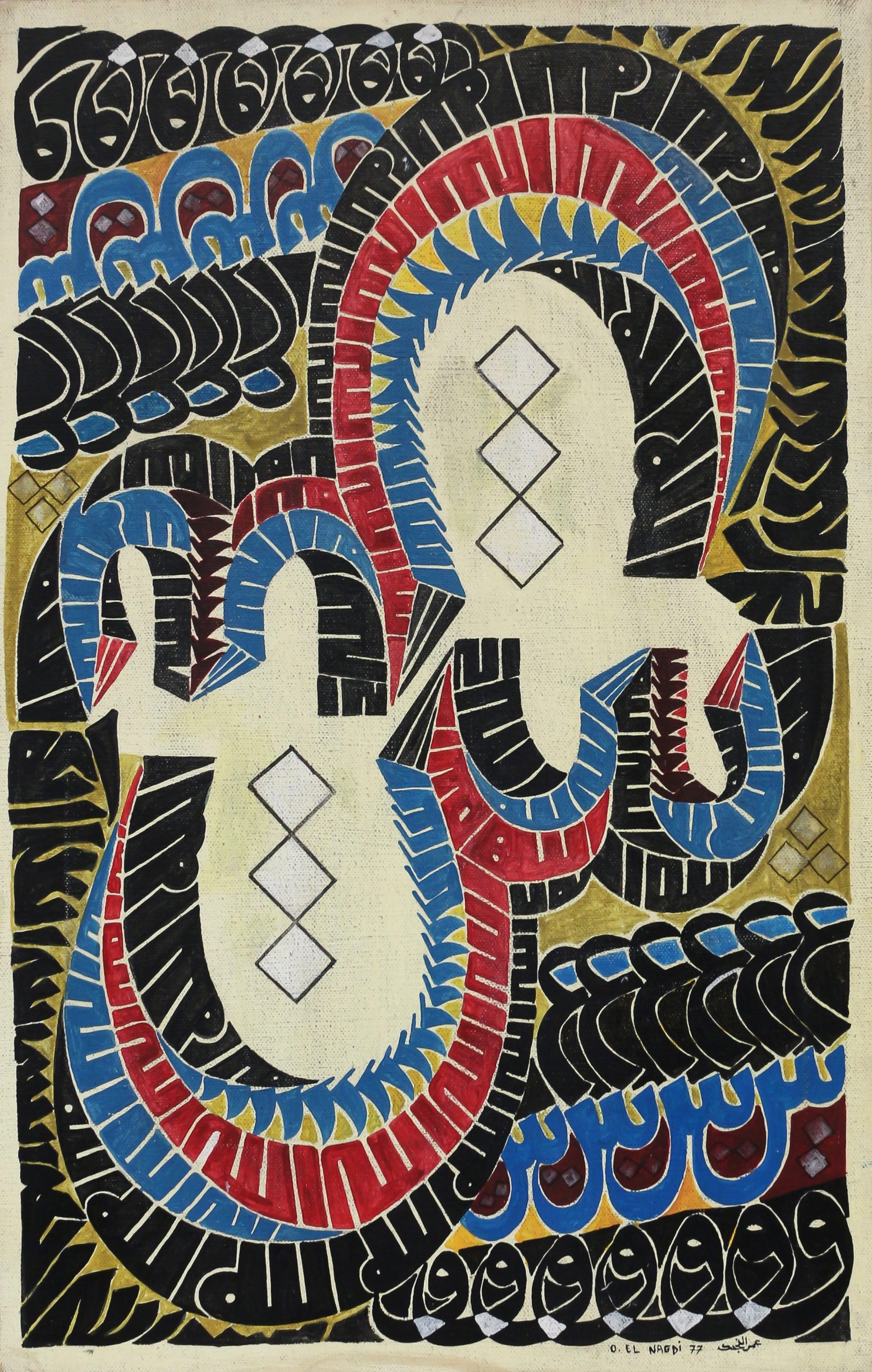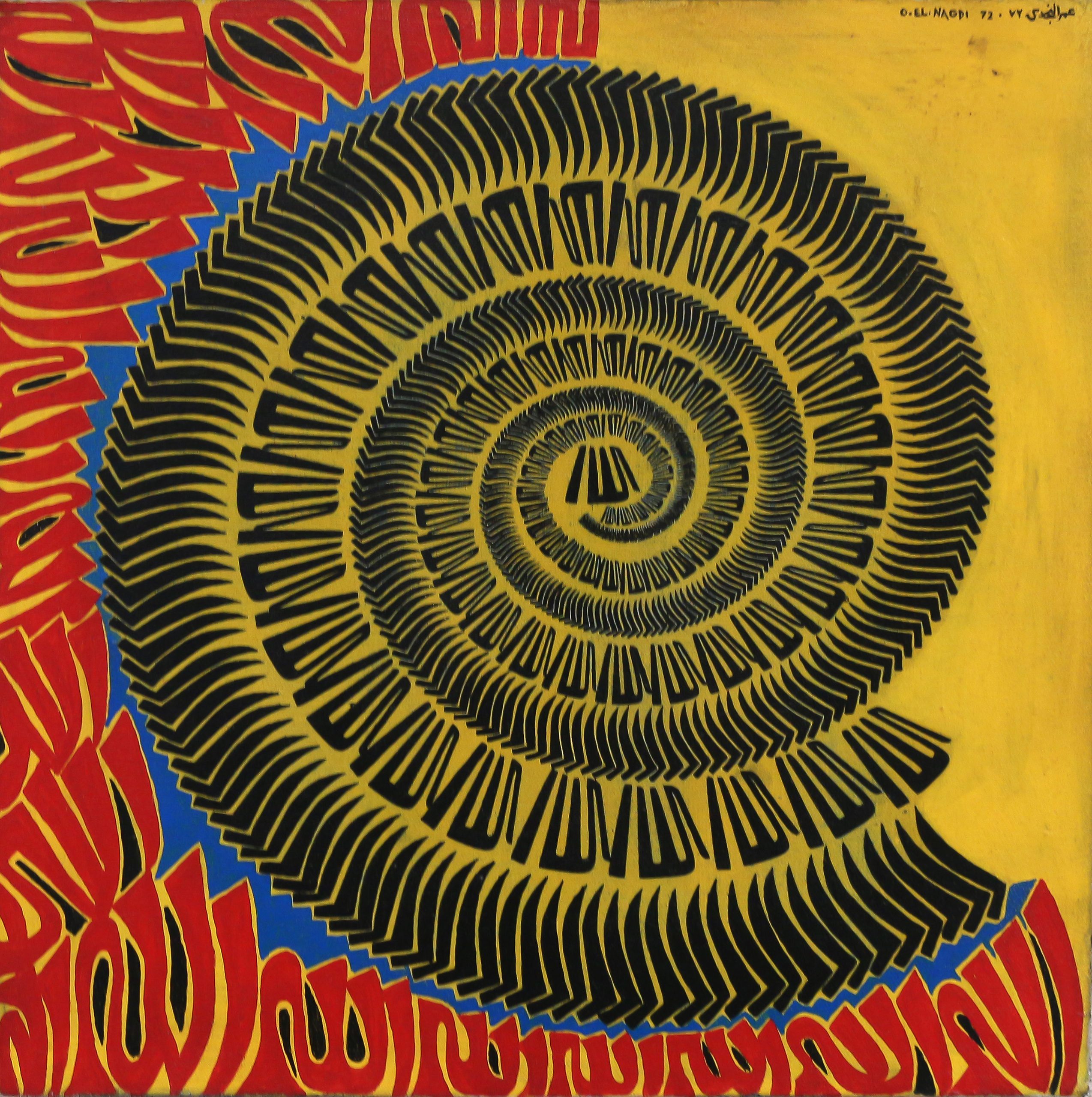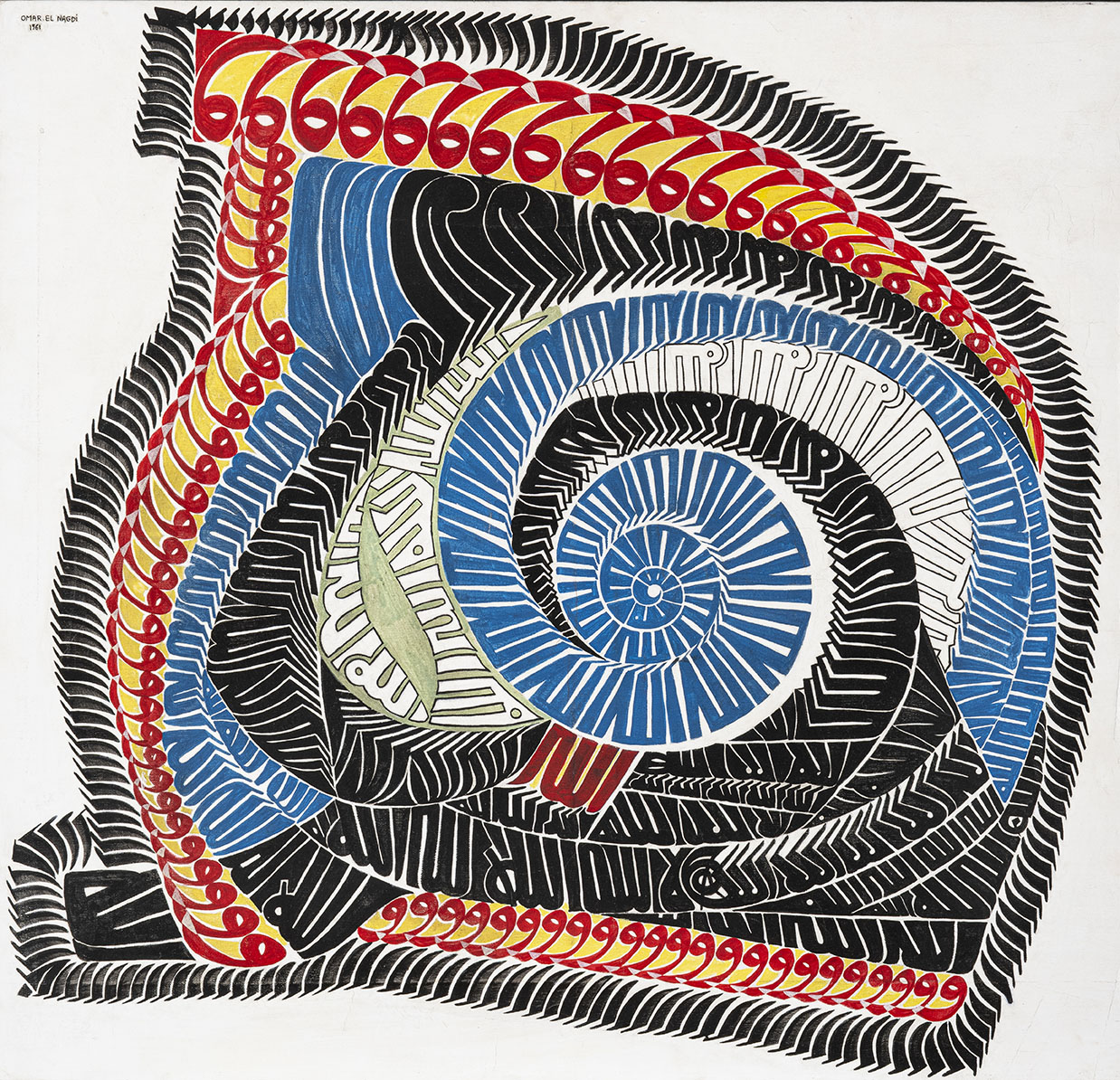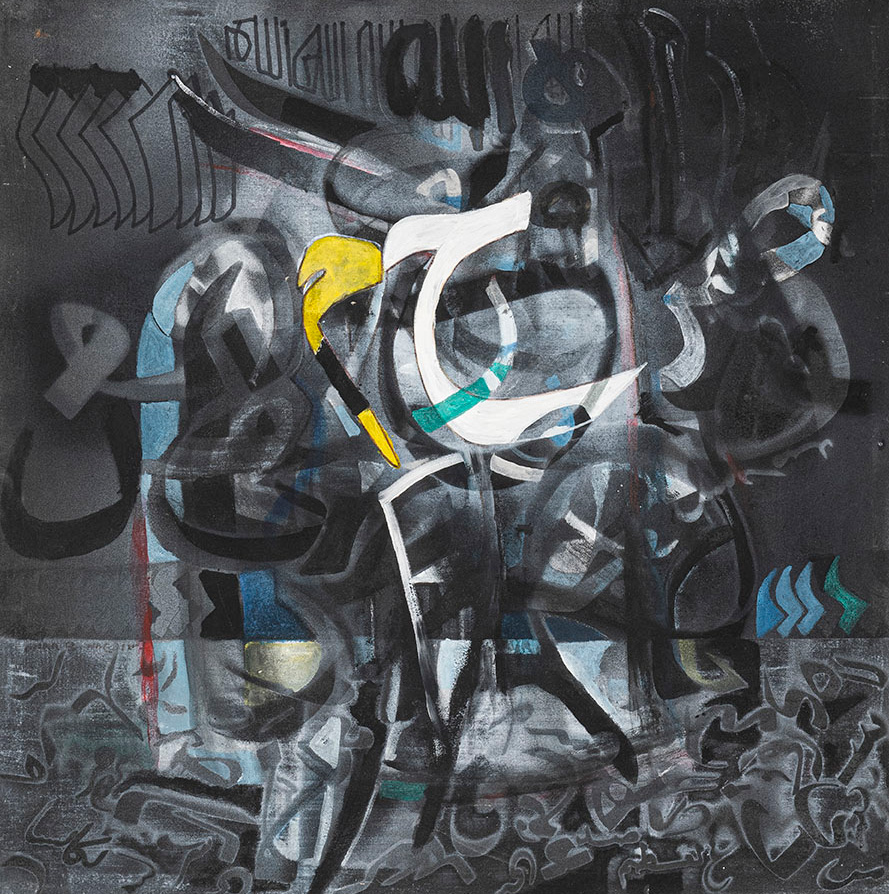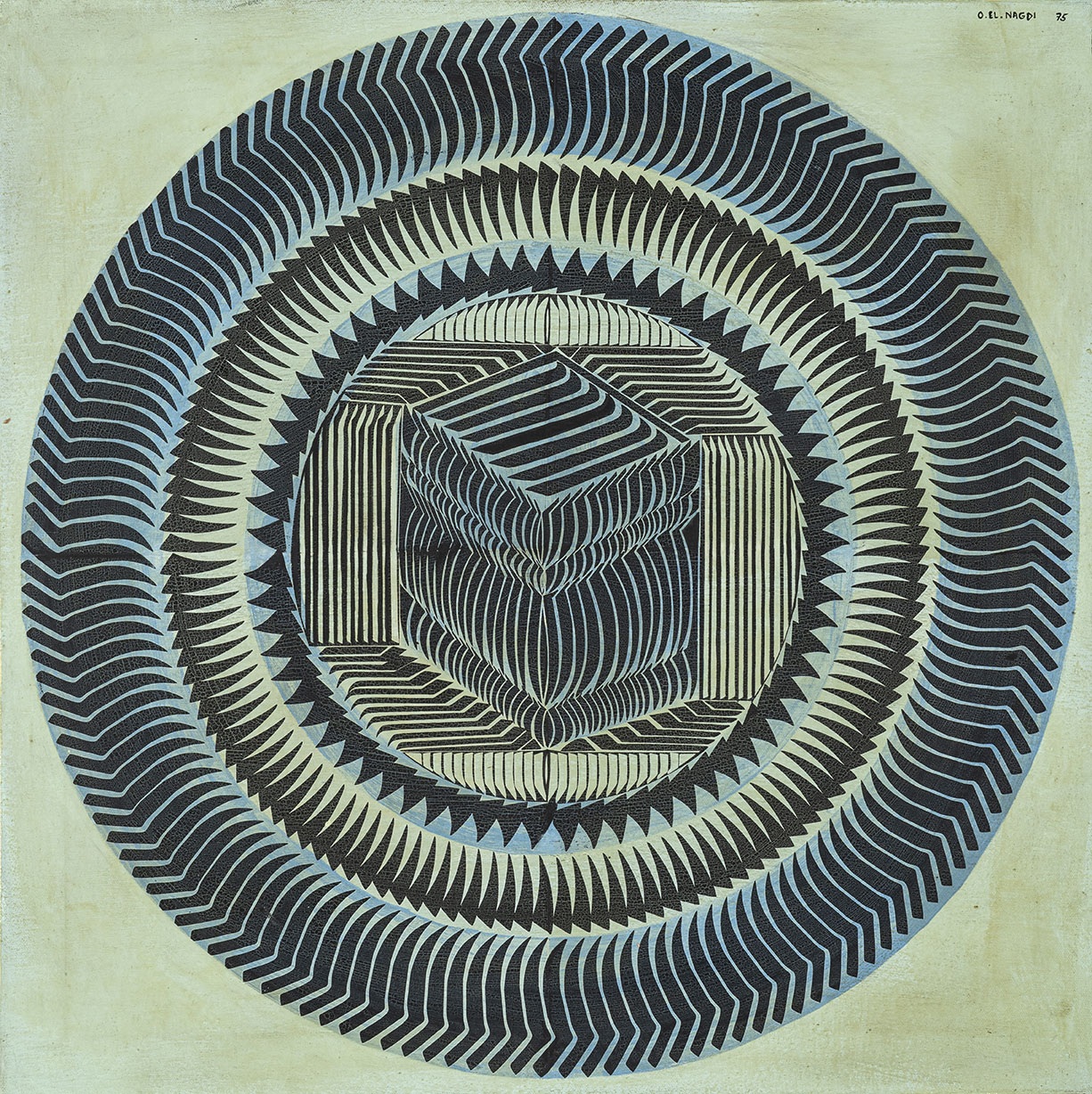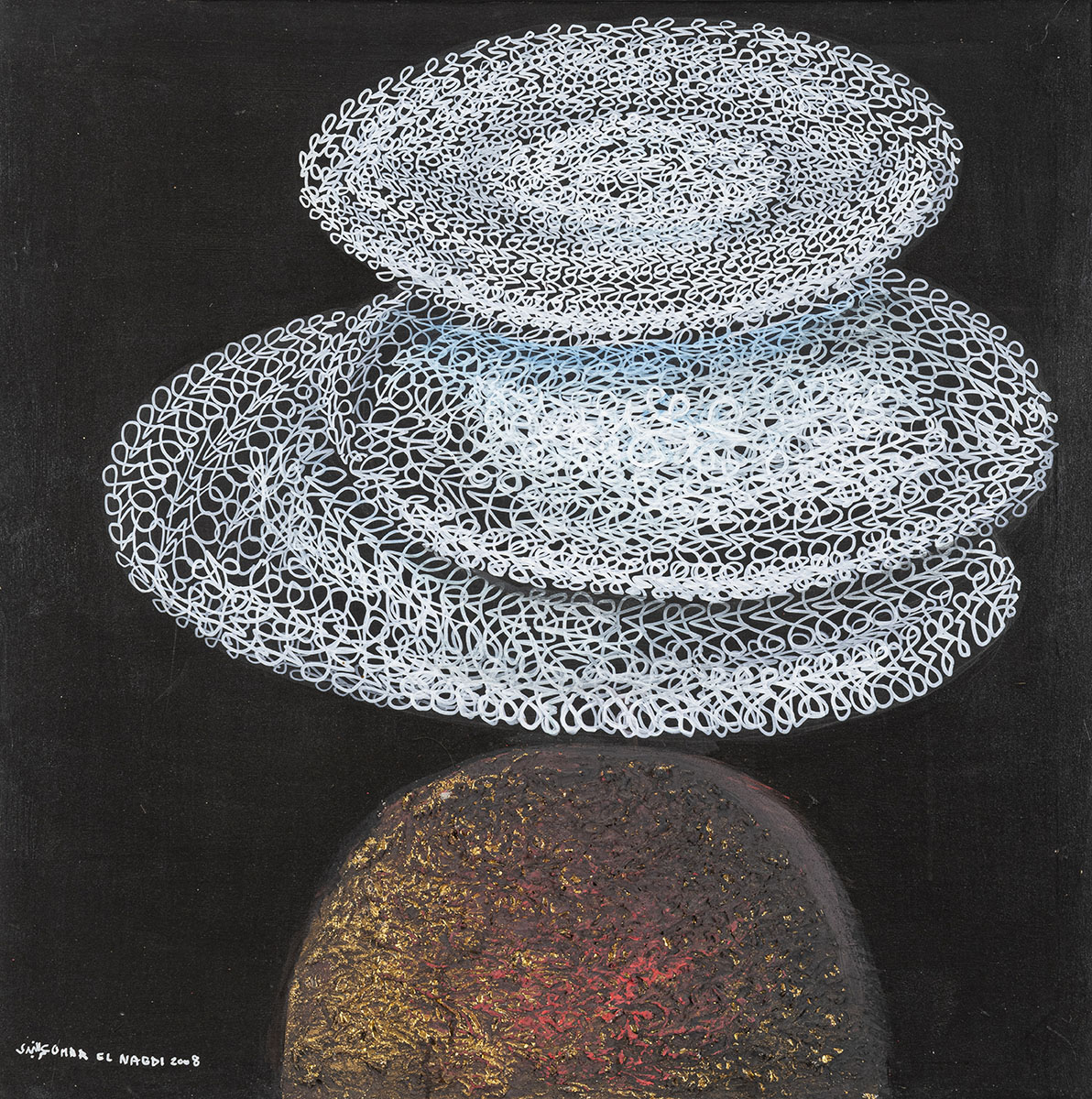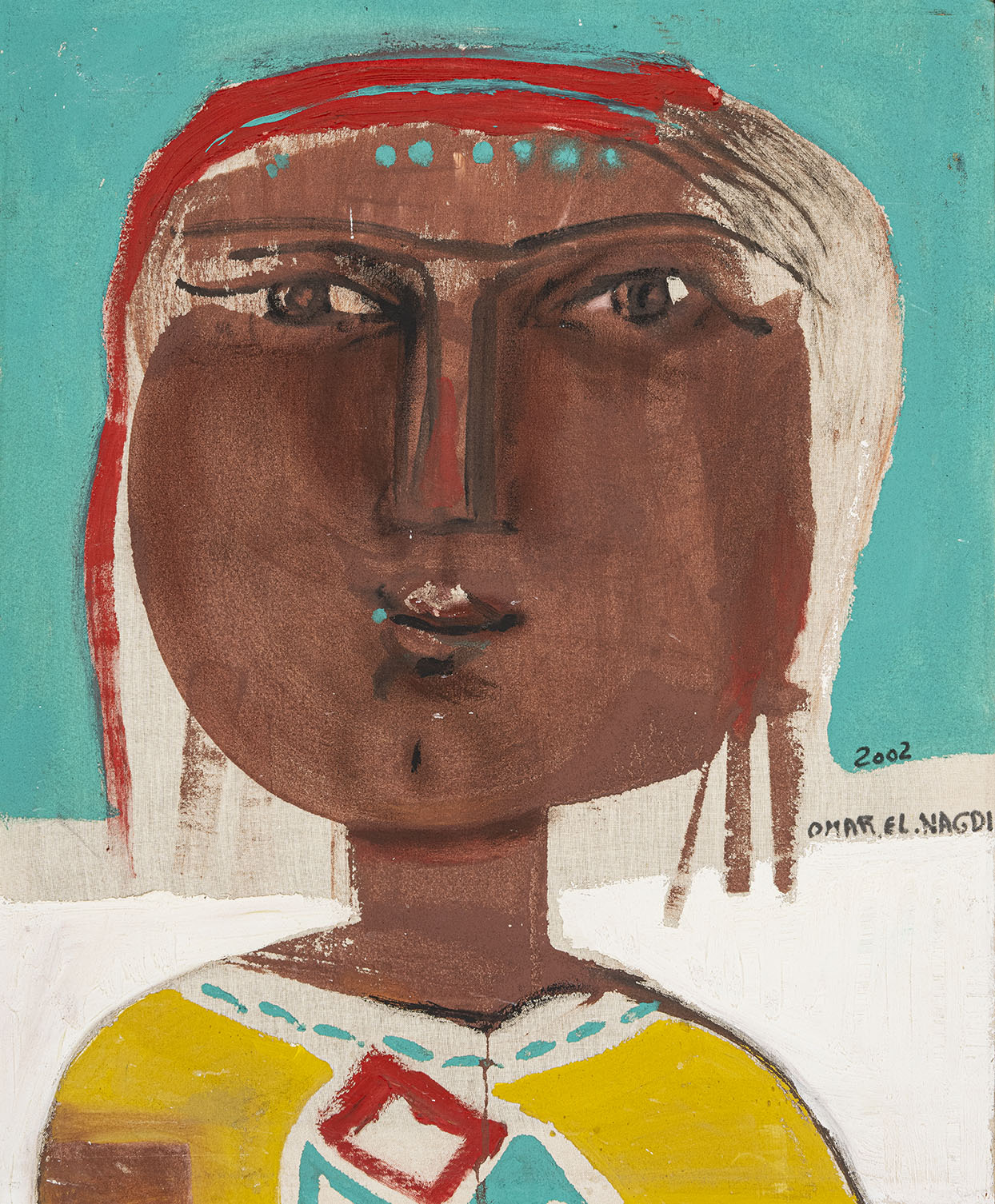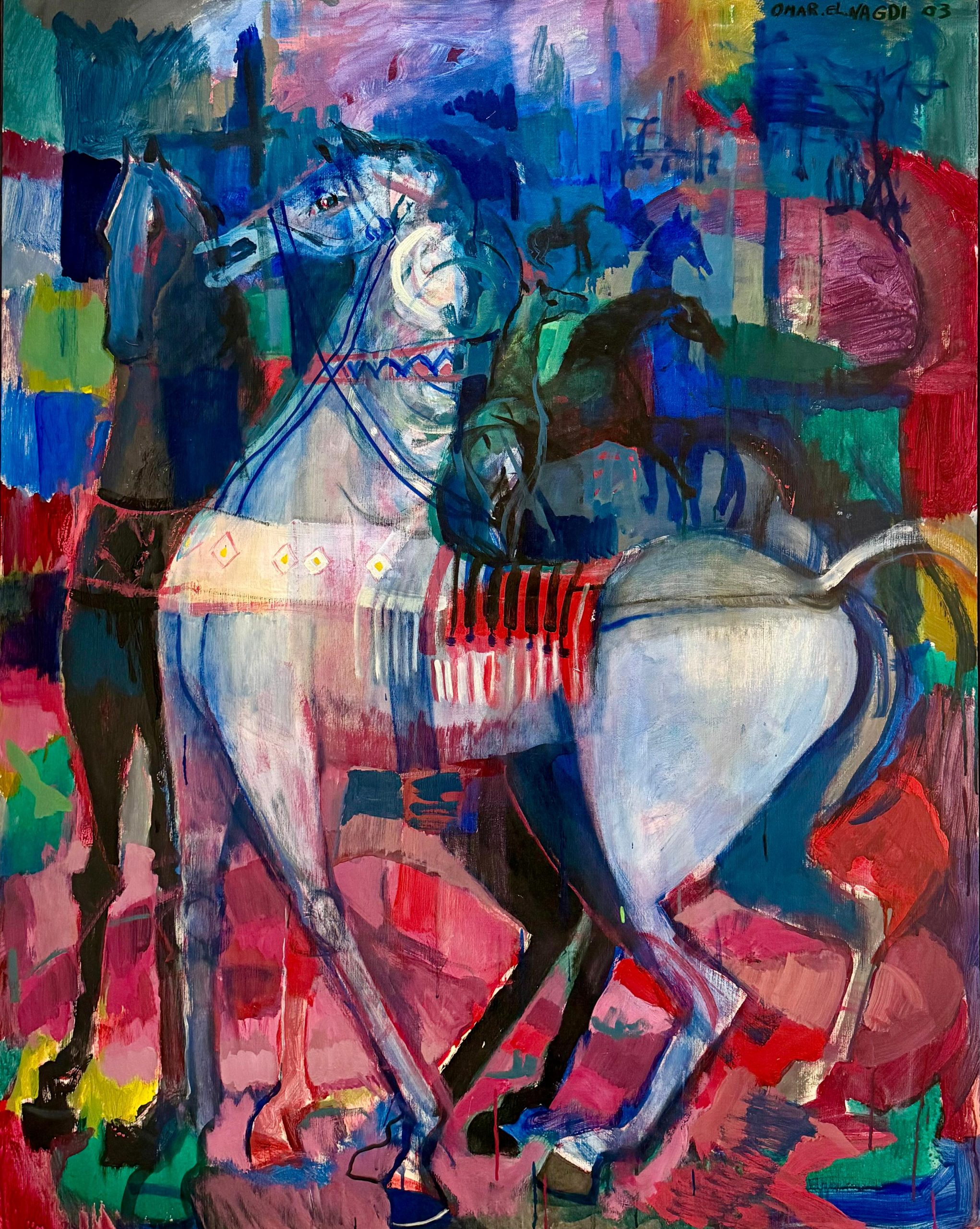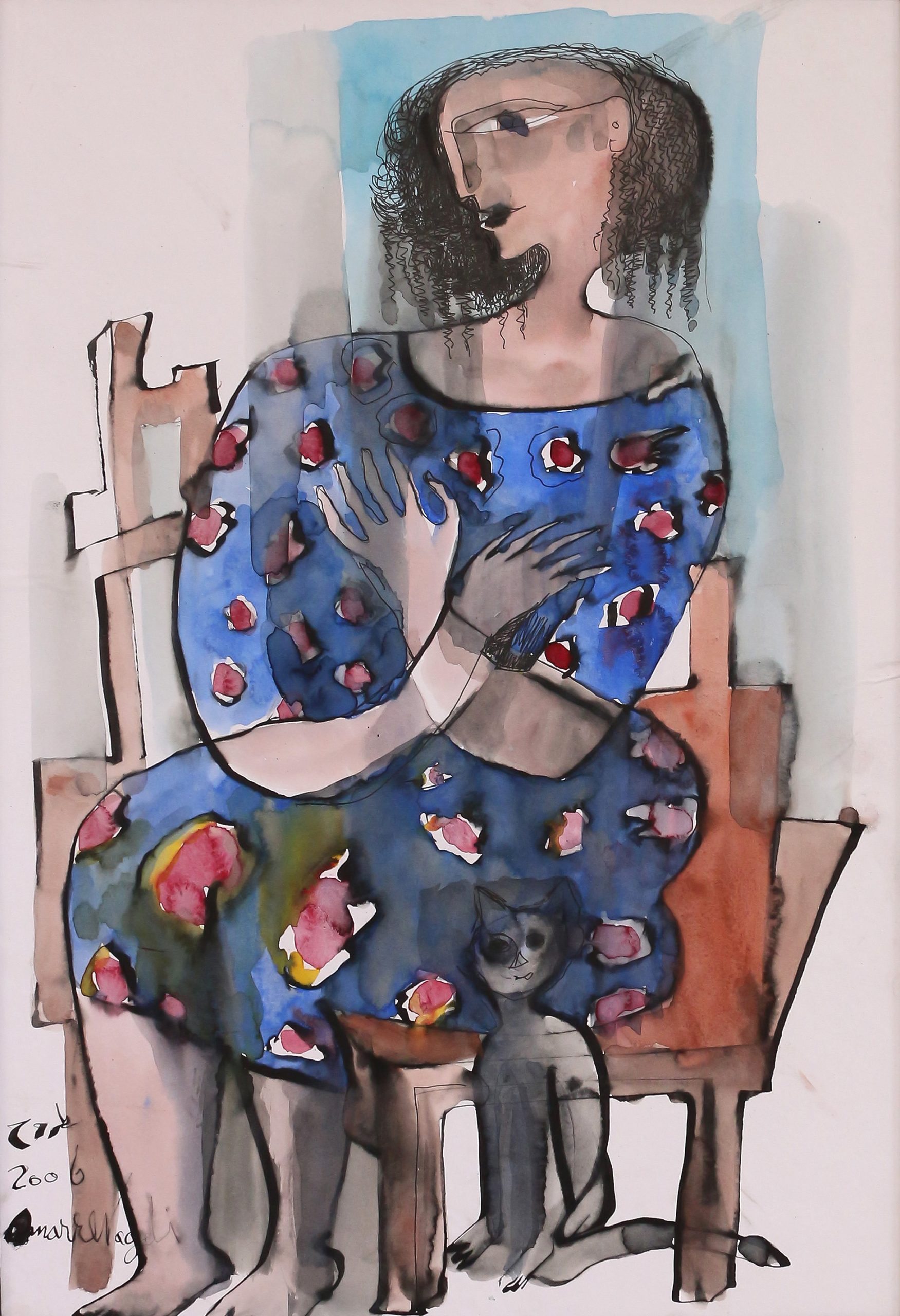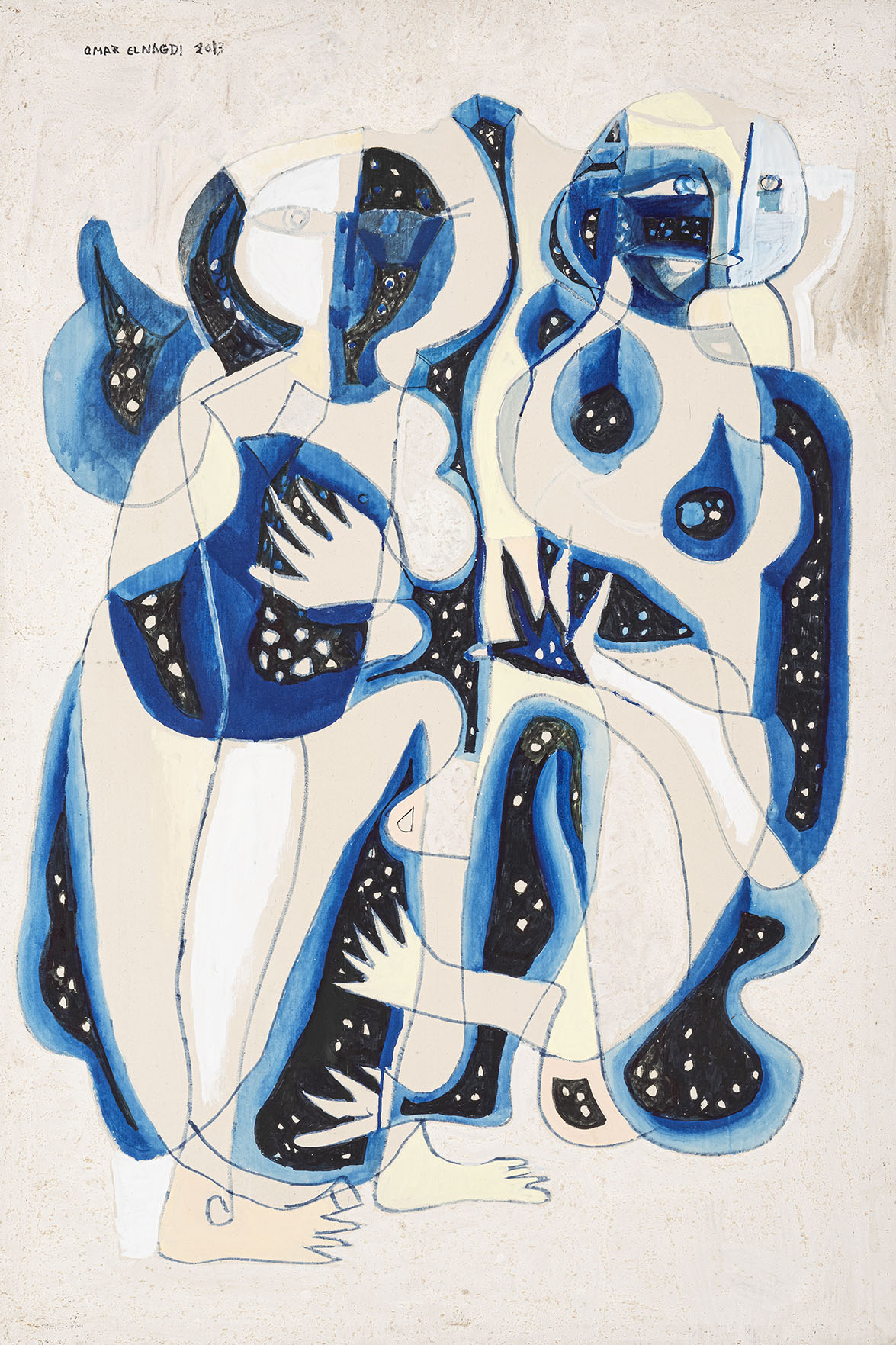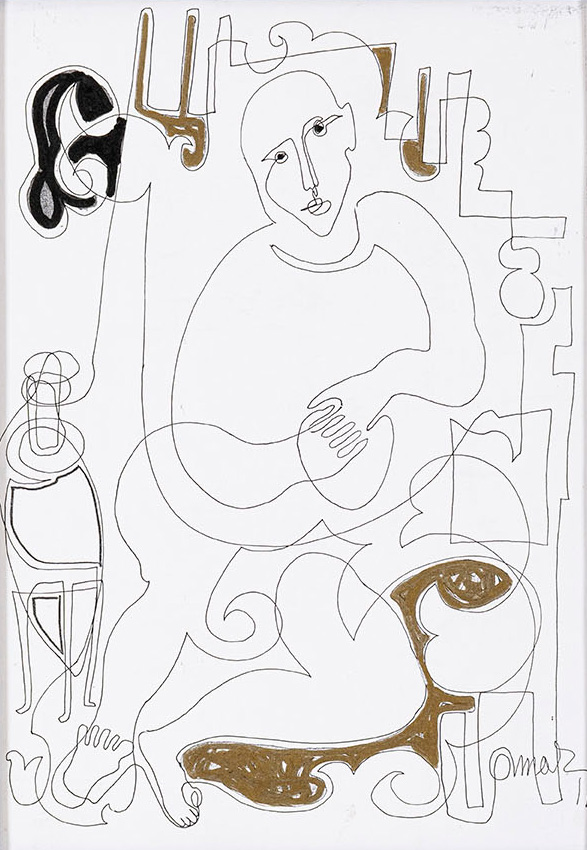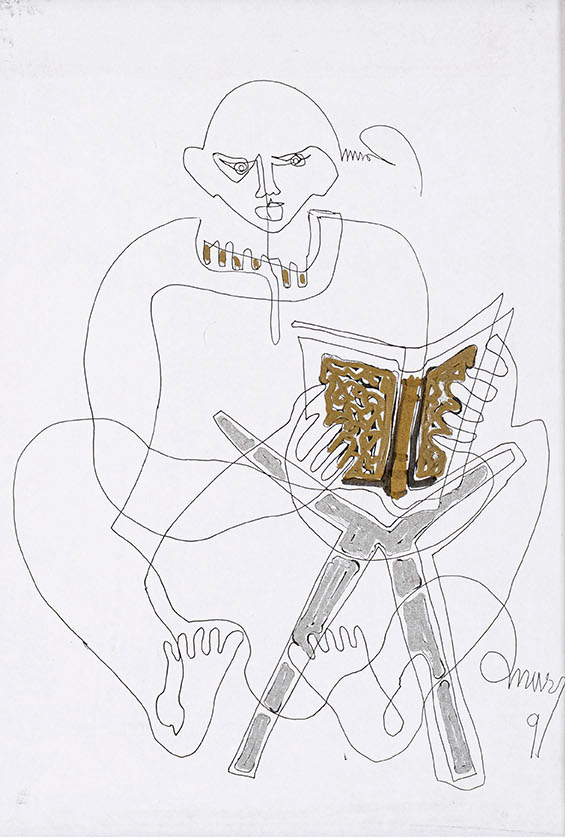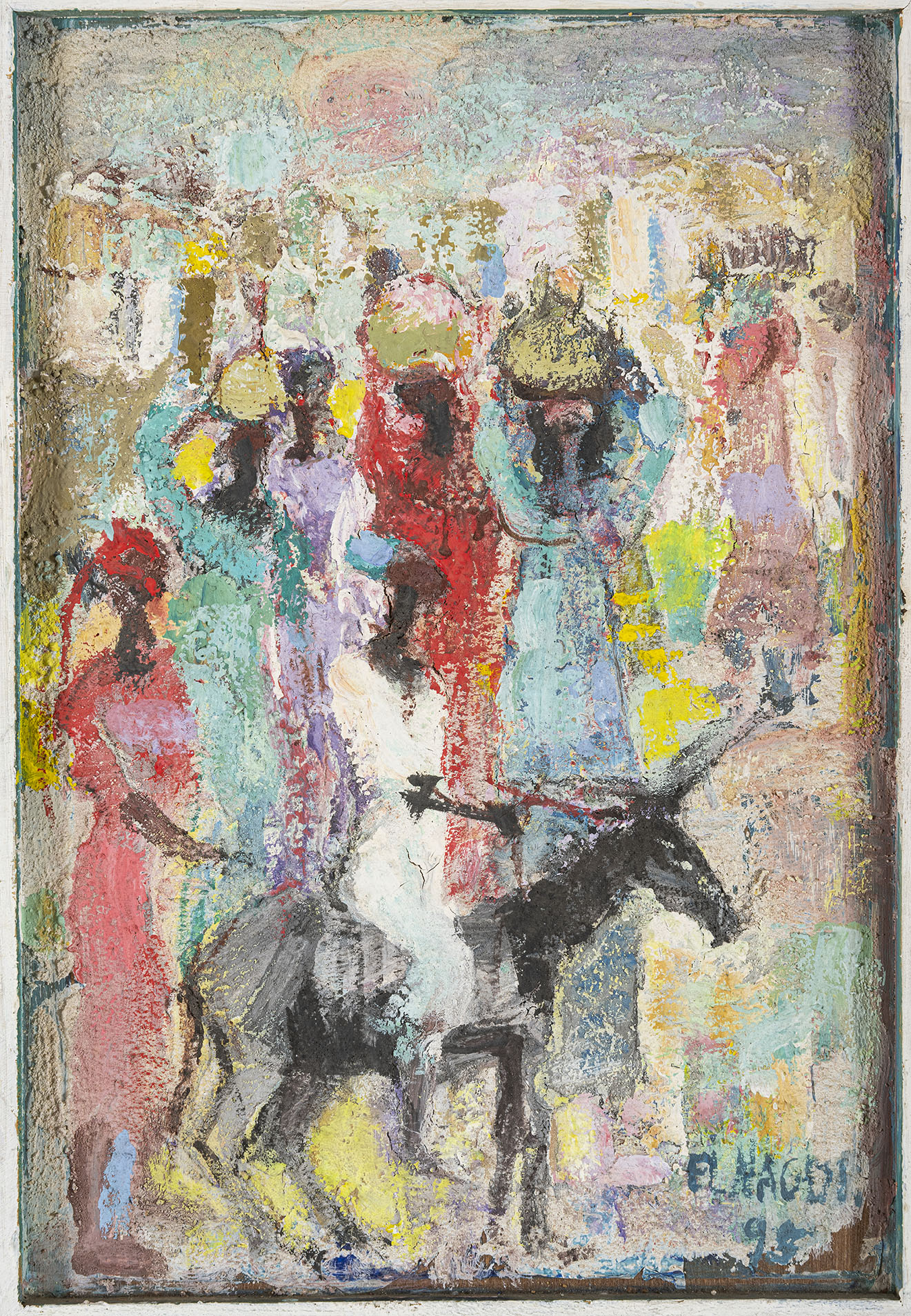Omar El-Nagdi: A Journey Across The Boundaries of Identity and Modernity
Since the beginning of his career during the fifties of the previous century, Omar
El-Nagdi was in constant pursuit to capture the essence of the moment and transform it
into visual tokens bursting with authenticity and rejuvenation, ultimately refuting any
gravitation towards a singular artistic medium. His works parallel carving with painting,
and sculpture alongside muralism. His approach opened new windows overlooking a
broader artistic overview where philosophy and experimentation intersect with solid
grounding in identity. While some Arab artists were occupied with simulating Western
art movements, Nagdi found his solace in the visual heritage of Islamic culture where
his aesthetic speculations were met with the right answers. Nagdi’s adaptation of the
Islamic decorative motifs dove beyond the surface into a deeper layer of profound
spirituality. In Omar’s view, Islamic art reached heights never touched by any other art
movement based on a unique relationship between space and form, solidity and
transparency. Eventually, his artistic experience resembles a massive arabesque where
lines overlap to allow in new beams of light, every time.
It’s safe to say that Omar El-Nagdi is a standout case in the history of Egyptian modern
art. Omar wasn’t a mere artist; he drew, sculpted, carved wood, designed murals and
worked with versatile mediums including wood, stone, ceramics and metals. His artistic
abilities extended to composing music in a signal to a compound artistic sensibility
merging sound, form, and colour. Nagdi’s artistic versatility wasn’t a show off but rather
a reflection of his inner potential. His choice of medium was based on his state of mind;
he drew during moments of tranquility and resorted to sculpting when he wanted to
regulate gushes of anger. His plurality enabled his works to become like extensions to
each other with each work keeping its own independent identity. Despite Omar’s
grounding to his cultural and Islamic identity, his experience wasn’t confined within the
boundaries of Cairo and its surroundings as his works have been travelling across
renowned international exhibitions across Europe since the 1970s. Omar El-Nagdi sets
an example in how a grounded identity is the portal to the world as long as it is coined
with a renewable, genuine vision.
Sufism as a regulating thread:
Nagdi’s oeuvre is characterised with a sufi inclination, not in a narrowed religious
meaning but rather through the artist’s search for a moment of surprise they could
visualise. Omar used to describe his work as a response to the “thunder” that shines
suddenly within the soul. As a result, his works embody his own excited impressions in
loose lines that simulate not reality but rather a reflection of the inner enlightenment
that ignited his impressions. It’s most probable that such inclination of Nagdi has
allowed a motif like the horse to appear most prominently across his works as it is
related to the Arab and Islamic heritages; it’s more like a motif that appears on its own
following an excitement.
Nagdi descends from a generation of artists who lived through the significant changes
of the second half of the twentieth century, oscillating between social realism and
openness upon international modernity. He wasn’t deeply and directly involved with
these currents, yet he carved a more independent path of his own where he re-read the
visual capital of Islamic and Arab heritages through a fresh lens. He was never known for
belonging to groups of a certain calibre. Instead, he listened inwardly and translated his
inspirations through versatile mediums, shying away from the demands & noise of
commerciality. Omar El-Nagdi was a good reader of aesthetic thought. Through Islamic
arts, he found a coherent philosophical form adjoined to the soul and creed. He denied
the orientalist view of decorative motifs which dialed them down to purposelessness.
Omar never remained a prisoner of the past, yet he breathed a contemporary spirit into
it, enabling his work to spark a modernist energy that clearly reveals its roots instead of
dismissing them.
Over half a century, Nagdi has participated at tens of exhibitions in Egypt and beyond.
His works have been acquired by international institutions and museums. His biggest
influence remains in the visual awareness which has affected his generations and the
following ones. Omar embodies the artist who considers every medium as an
opportunity for expression. While Omar El-Nagdi is gone, his works still speak volumes
of his artistic and spiritual endeavours and his profound belief of how art isn’t a luxury
but a spiritual method for finding meaning amidst the noise of the world. Today, Picasso
Art Gallery curates an exhibition that enables its audience to revisit the journey of the
renowned artist whose experience transcends his own biography and cements itself as
an integral part of Egyptian & Arab cultural memory.
About the Artist
(b. 1931 – Cairo, Egypt) A towering figure in modern Arab art with a career that spanned
over six decades, Omar El Nagdi has weaved a territory where he has crowned himself
as an unparalleled master of Expressionism, Cubism and Fauvism with a cultural
identity deeply rooted in Egyptian heritage. He obtained his BFA in painting from the
Faculty of Fine Arts, Helwan University in Cairo in 1952, securing first class honours at 21
years old. His art education extended far and beyond at Moscow, Venice and Ravenna
where he honed his versatile artistic sensibilities through the exploration of different
mediums including mosaics, ceramics, silk-screen printing and graphic arts
implemented through ceramics, wood, stone and various metals. With a multifaceted
educational background and forwarded practice, Nagdi has woven a visual language
rooted in cultural identity and cosmopolitan in artistic echo.

